Tour de France jerseys: Yellow, green, white and polka dot explained
We explain what the yellow, green, polka dot and white jerseys worn by riders in the Tour de France represent
- Sign up to our newsletter Newsletter
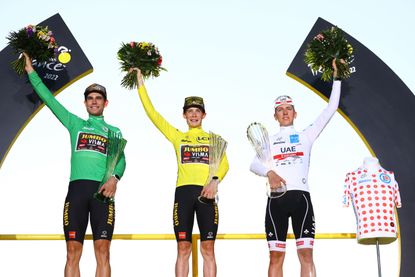
- Yellow jersey
- Green jersey
- Polka dot jersey
- White jersey
- Other classifications

The Tour de France sees the very best cyclists in the world battle it out for the yellow, green, white and polka dot jerseys, based on the general, points, mountains and young rider classifications.
The jersey for each category is awarded to the leader of that classification at the end of every stage, and the recipient earns the right to wear it during the following day's racing. When a rider has the lead in multiple classifications, the yellow jersey is prioritised, then green, the polka dot, and white - the next person on the ranking wears the kit in the leader's stead.
Here we take a brief look at what they are and how they are won.


Tour de France yellow jersey - GC leader
Also called the maillot jaune , the Tour de France yellow jersey is the most coveted piece of kit in professional cycling. The wearer is the rider who has completed the race in the least amount of time, and as such tops the overall or general classification (GC) of the race.
Tadej Pogačar (UAE Team Emirates) dominated the GC in 2020 and 2021, wearing the yellow jersey almost throughout the 2021 edition, before Jonas Vingegaard (Jumbo-Visma) took it off him halfway through the 2022 race, wearing it until the end of the race.
Before that, in 2012, Bradley Wiggins became the first British rider to finish in Paris in the Yellow Jersey - with Chris Froome following up in 2013, 2015-2017. Geraint Thomas took the 2018 race, becoming the third British rider to win the race.
The yellow jersey is sponsored by LCL, a French bank, and it is yellow, because the Tour's original organiser, L'Auto , was a newspaper printed on yellow paper.
Get The Leadout Newsletter
The latest race content, interviews, features, reviews and expert buying guides, direct to your inbox!
A time bonus of 10, six and four seconds will be awarded to the first three riders across the finish line each day (not including TTs). These bonus seconds are taken off their stage and therefore overall time. Bonus seconds of eight, five and two seconds are also awarded on certain, strategically placed climbs on stages one, two, five, 12, 14 and 17.
Last 10 winners of the Tour de France general classification:
- 2013: Chris Froome
- 2014: Vincenzo Nibali
- 2015: Chris Froome
- 2016: Chris Froome
- 2017: Chris Froome
- 2018: Geraint Thomas
- 2019: Egan Bernal
- 2020: Tadej Pogačar
- 2021: Tadej Pogačar
- 2022: Jonas Vinegaard
Tour de France green jersey - points classification
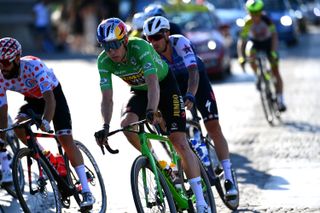
The green jersey relates to points awarded to riders according to the position they finish on each stage, with additional points for intermediate sprints during some stages also on offer.
The number of points on offer will vary depending upon the type of stage. More are on offer during pure flat, sprint days, while on hilly and mountain stages there are fewer points available. The points are then tallied up after each stage and added to points won in all previous stages. The green jersey ( maillot vert) is awarded to the rider with the most points. Sometimes it is a sprinter's game, sometimes more of an all-rounder - like Wout van Aert (Jumbo-Visma).
The jersey took its colour because the initial sponsor was a lawn mower manufacturer - though the colour was changed once in 1968 to accommodate a sponsor. It is now sponsored by Škoda, and has a new shade for this year .
Both Eddy Merckx and Bernard Hinault successfully won both the general classification and the points classification with Merckx achieving the biggest sweep in 1969 with the points, mountain and general classifications to his name. Over the last ten years, Peter Sagan has triumphed in the points classification on no less than seven occasions.
The following points are on offer:
Flat stage (stages 2, 3, 4, 7, 8, 11, 18, 19, 21): 50, 30, 20 points (descending to 15th place)
Hilly stage (stages 1, 9, 10, 12, 13): 30, 25, 22 points (descending to 15th place)
Mountain stage and ITTs (5, 6, 14, 15, 16, 17, 20): 20, 17, 15, (descending to 15th place)
Intermediate sprint: 20, 17, 15, (descending to 15th place)
Last 10 winners of the Tour de France points classification:
- 2013: Peter Sagan
- 2014: Peter Sagan
- 2015: Peter Sagan
- 2016: Peter Sagan
- 2017: Michael Matthews
- 2018: Peter Sagan
- 2019: Peter Sagan
- 2020: Sam Bennett
- 2021: Mark Cavendish
- 2022: Wout van Aert
Tour de France jerseys: Polka dot - King of the Mountains classification leader
Tour de france polka dot jersey - mountains classification.
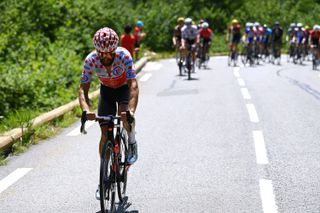
Mountains points are awarded to riders who manage to summit classified climbs first. Points vary depending on the category of each ascent, with more difficult climbs awarding more mountains points.
Climbs are divided into five categories: 1 (most difficult) to 4 (least difficult) - then there's the ' Hors Categorie ', denoted by HC which represents the most challenging of ascents. The tougher the category, the more points on offer, and to more riders - a HC climb will see points awarded down to the first eight over the summit, while a fourth category climb results in points for just the first rider over the top.
The organisers decide which mountains or climbs will be included in the competition, and which category they fall into. If the stage features a summit finish, the points for the climb are doubled.
The points are tallied up after each stage and added to points won in all previous stages. The distinctive white-with-red-dots jersey ( maillot à pois rouges ) is given to the rider with the most mountains points. The first climber's award was given out in 1933, and the jersey arrived on the scene in 1975. It is now sponsored by Leclerc, a supermarket.
Points awarded as follows:
HC: 20, 15, 12, 10, 8, 6, 4, 2pts
1st cat: 10, 8, 6, 7, 5, 1pt
2nd cat: Five, three, two.
3rd cat: Two and one points
4th cat: One point
The souvenir Henri Desgrange is awarded to the first rider over the race’s highest point, the Col de Loze, on stage 17. The souvenir Jacques Goddet to the first rider over the Col du Tourmalet on stage 16.
Last 10 winners of the Tour de France mountains classification:
- 2013: Nairo Quintana
- 2014: Rafał Majka
- 2015: Chris Froome
- 2016: Rafał Majka
- 2017: Warren Barguil
- 2018: Julian Alaphilippe
- 2019: Romain Bardet
Tour de France white jersey - best young rider

The plain white, young rider classification jersey is awarded to the fastest rider born after 1 January 1998, meaning 25 or under. It is sponsored by Krys, an opticians
First introduced in 1975, riders such as Marco Pantani, Alberto Contador, Egan Bernal and Tadej Pogačar have all won the young rider classification, helping propel them onto bigger and better things during their careers.
Last 10 winners of the Tour de France young rider classification:
- 2014: Thibaut Pinot
- 2015: Nairo Quintana
- 2016: Adam Yates
- 2017: Simon Yates
- 2018: Pierre Latour
- 2022: Tadej Pogačar
Other Tour de France classifications - team and combativity
There are two further classifications that do not earn the winner(s) a coloured jersey - the most aggressive rider award and Team Classification .
While not necessarily a classification, the Combativity Award is given to the rider who has shown the most fighting spirit during each individual stage, as chosen by the race jury. They will wear a gold race number during the following day's stage. A 'Super Combativity' award is handed out on the final stage for the most aggressive rider during the whole race.
The Team Classification is based on the collective time of the three highest-placed riders from each squad. Leaders of the team classification get to wear race numbers that are yellow with black digits, and the right to wear yellow helmets. The latter is not compulsory.
Thank you for reading 20 articles this month* Join now for unlimited access
Enjoy your first month for just £1 / $1 / €1
*Read 5 free articles per month without a subscription
Join now for unlimited access
Try first month for just £1 / $1 / €1
Adam is Cycling Weekly ’s news editor – his greatest love is road racing but as long as he is cycling on tarmac, he's happy. Before joining Cycling Weekly he spent two years writing for Procycling, where he interviewed riders and wrote about racing, speaking to people as varied as Demi Vollering to Philippe Gilbert. Before cycling took over his professional life, he covered ecclesiastical matters at the world’s largest Anglican newspaper and politics at Business Insider. Don't ask how that is related to cycling.

Specialized is named in a recent workers' rights investigation claiming that the cycling garment company owes $659,000 in unpaid wages and severance to former factory workers.
By Cycling Weekly Published 1 April 24

We undertook a comprehensive tasting of the commonly available energy gels, and did our best to find something nice to say about each of them.
By Tyler Boucher Published 1 April 24
Useful links
- Tour de France
- Giro d'Italia
- Vuelta a España
Buyer's Guides
- Best road bikes
- Best gravel bikes
- Best smart turbo trainers
- Best cycling computers
- Editor's Choice
- Bike Reviews
- Component Reviews
- Clothing Reviews
- Contact Future's experts
- Terms and conditions
- Privacy policy
- Cookies policy
- Advertise with us
Cycling Weekly is part of Future plc, an international media group and leading digital publisher. Visit our corporate site . © Future Publishing Limited Quay House, The Ambury, Bath BA1 1UA. All rights reserved. England and Wales company registration number 2008885.
Official games

2023 Edition
- Stage winners
- All the videos
Tour Culture
- Commitments
- key figures
- Sporting Stakes
- "Maillot Jaune" Collection
- The jerseys

POLKA DOT JERSEY

Symbol of the mountains, of a rider pushing beyond their limits and of courage, the red polka dot jersey , which is sponsored by E.Leclerc, is awarded to the Tour de France’s leader of the best climber classification. Although this classification was introduced in 1933, its symbol, the polka dot jersey, appeared in 1975, which was also the year the Tour first finished on the Champs-Élysées and was won by Bernard Thévenet. It owes its appearance to track racing specialist Henri Lemoine, who competed between the 1930s and 1950s, and that Félix Lévitan, co-director of the Tour with Jacques Goddetwhich, had particularly noticed. While Belgium’s Lucien Van Impe was its first winner and claimed the mountains classification six times, just like his illustrious predecessor, Spain’s Federico Bahamontes, the so-called “Eagle of Toledo”, Frenchman Richard Virenque holds the record for victories with seven titles.

Accreditations
Privacy policy, your gdpr rights.
Here’s Exactly What the Tour de France Jersey Colors Mean
The story behind the yellow, green, polka dot, and white shirts.
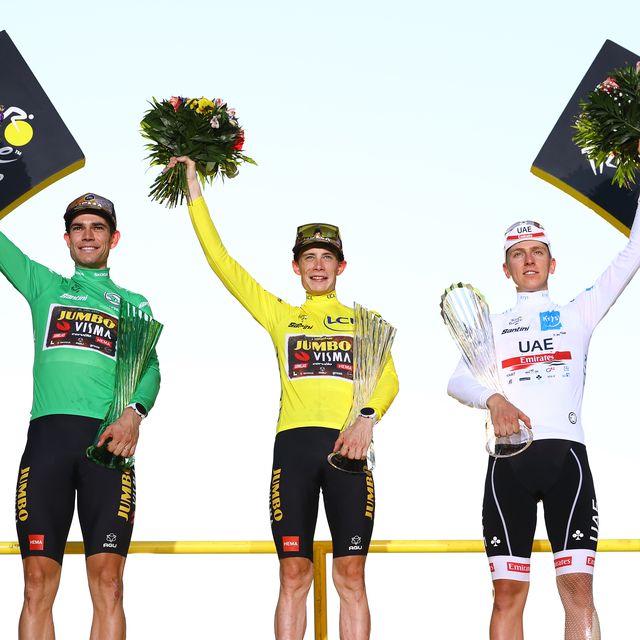
Here’s a simple breakdown of what each Tour de France jersey color means:
Yellow Jersey
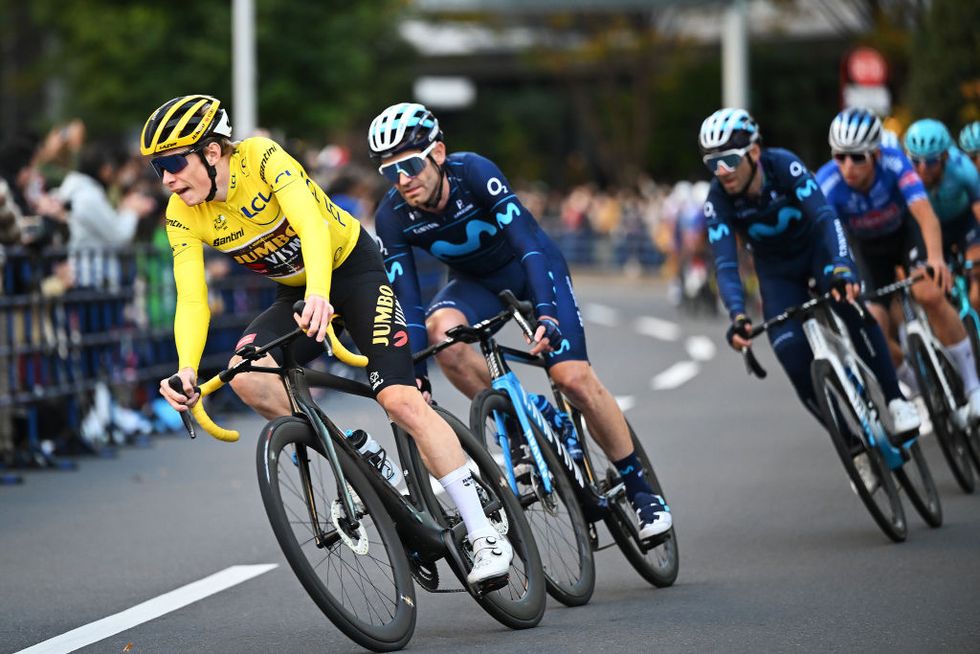
For most, the race’s fabled yellow jersey, or maillot jaune, stands above all else, as it designates the rider who leads the General Classification . After each stage, officials calculate who has the fastest time across the entire race and the jersey then goes to the overall leader. That rider wears it in the following stage. Because it’s based on time and not points, the yellow doesn’t necessarily go to the given day’s stage winner, but rather the leader overall.
Contenders for the yellow jersey—and, therefore, the overall Tour de France title—are well-rounded cyclists and smart tacticians with skills in both climbing and time trialling. They must also show enough strength to hold the pace of the peloton, especially as rival teams work together to drop the leader at every possible opportunity.
Here's how the Tour’s yellow jersey gets made during the race:

Green Jersey
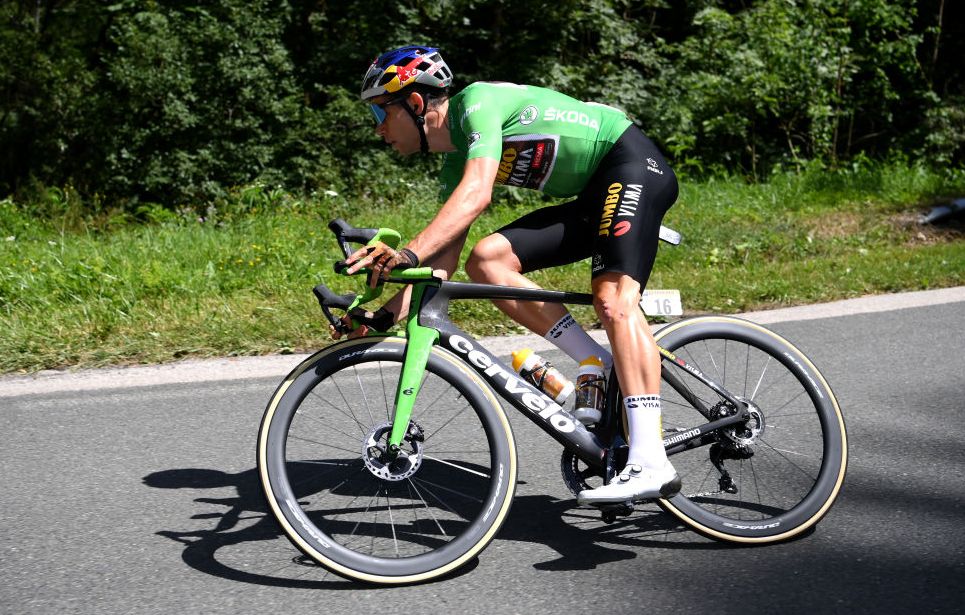
While known as the “sprinter’s jersey,” the green jersey goes to the leader of the Points Classification . The amount of points given depends on the stage profile—whether it’s flat or mountainous, for example. Typically, the winners are the first 10 to 25 riders who cross a stage finish, because the most points are traditionally gained at the end of the flatter stages (where the sprinters shine).
Ultimately, the green goes to a well-rounded and consistent rider, as well as to those who show tremendous persistence, picking up points where they can.
Red Polka Dot Jersey
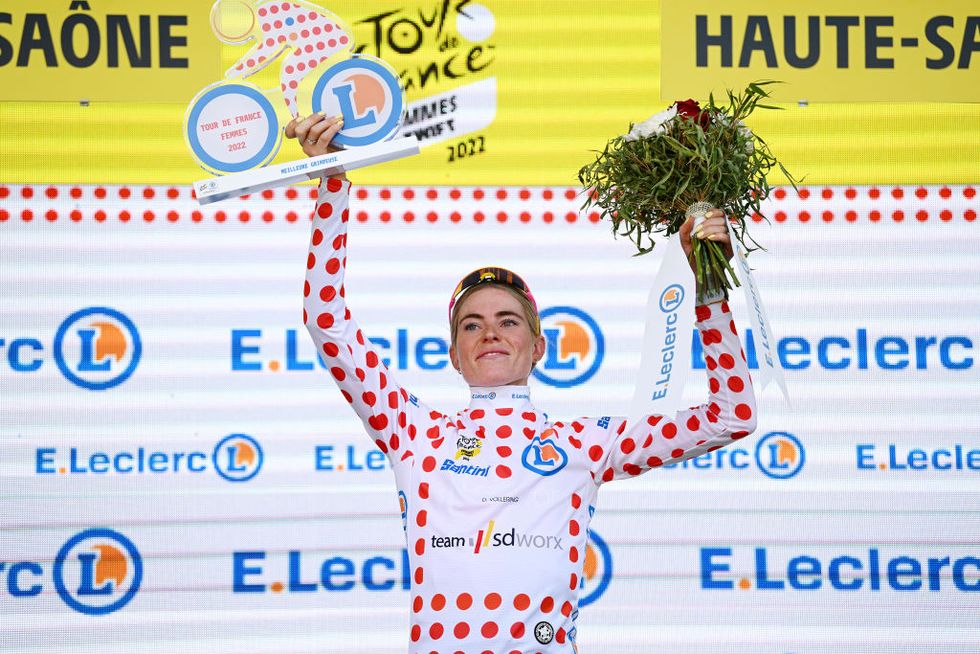
The polka dot jersey goes to the leader of the Mountains Classification , otherwise known as King of the Mountains. Points in this contest are awarded to the first riders who reach the summit of designated climbs on each stage.
Tour de France climbs are ranked from category 1 (most difficult) to category 4 (least difficult). A fifth class, hors catégorie (“beyond category”), is reserved for the most challenging ascents. The amount of points awarded depends on the difficulty of each climb, though sometimes shorter or milder climbs will join a higher category if they come at the end of a stage.
Of course, the rider in polka dots must be a strong climber. Often, it goes to small, lightweight guys with very high power outputs . The KoM competition comes into its own once the race heads into the mountain stages, where most points are available.
White Jersey
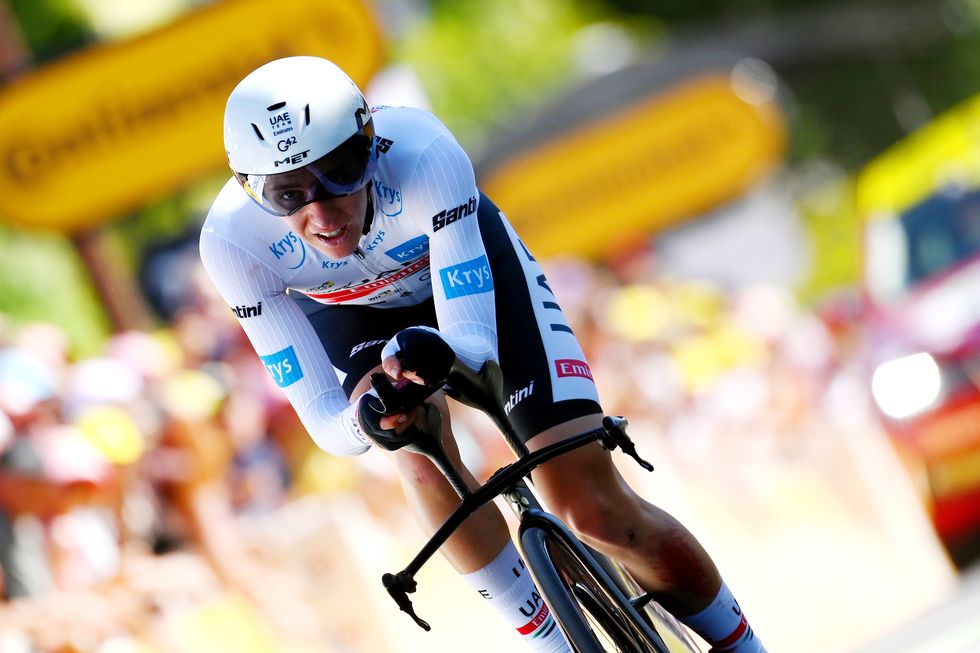
The white jersey, or maillot blanc , goes to the General Classification leader who is 25 years old or younger (on January 1 in the given race year). Put simply, it goes to the best young rider with the lowest overall time. For young, ambitious all-rounders in the race, winning the white jersey is like winning yellow.
Other Awards
Two other classifications exist that are not awarded with a special jersey: the Combativity Award and the Team Classification.
Although largely a token prize, Combativity Award winners still get a podium appearance when the race wraps up in Paris. After every stage, excluding time trials, a panel decides the day’s most aggressive rider. Not necessarily the stage winner, it could be someone who has consistently attacked, instigated a breakaway , or been a key player in the stage outcome. This rider then wears a red race number (instead of black) in the following day’s stage. A Super Combativity Award is given on the final stage for the most aggressive rider throughout the entire Tour.
The Team Classification is based on the collective time of the three highest-placed riders in the General Classification from each team. The best team then wears its race numbers against a yellow background, rather than a conventional white background, and also has the option of wearing yellow helmets.
.css-1t6om3g:before{width:1.75rem;height:1.75rem;margin:0 0.625rem -0.125rem 0;content:'';display:inline-block;-webkit-background-size:1.25rem;background-size:1.25rem;background-color:#F8D811;color:#000;background-repeat:no-repeat;-webkit-background-position:center;background-position:center;}.loaded .css-1t6om3g:before{background-image:url(/_assets/design-tokens/bicycling/static/images/chevron-design-element.c42d609.svg);} 2024 Tour de France Femmes avec Zwift
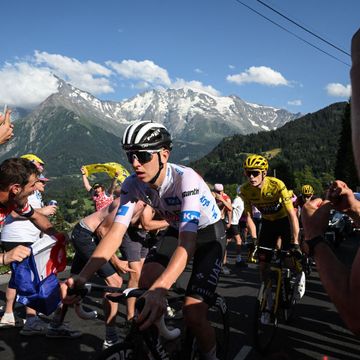
Should We Worry About the Tour de France Femmes?
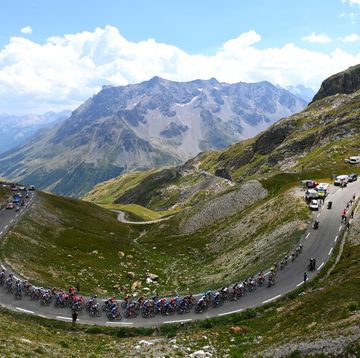
2024 Tour de France May Start Using Drones

Riders Weigh In on the Tour de France Routes
Tour de France

Challengers of the 2024 Giro d'Italia and TdF
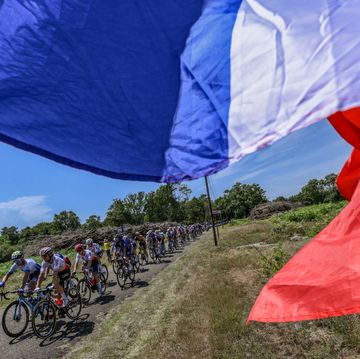
The 2024 Tour de France Can’t Miss Stages
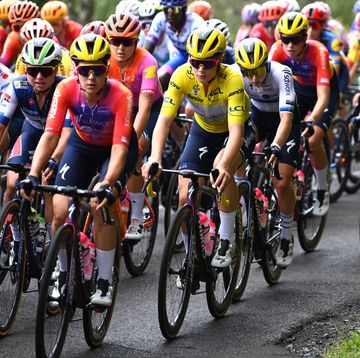
2024 Tour de France Femmes Can't-Miss Stages
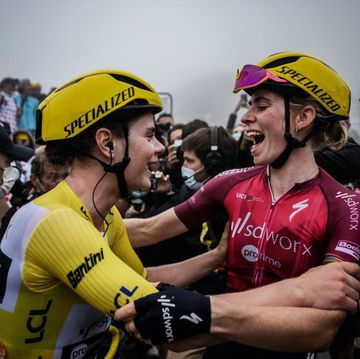
How Much Money Do Top Tour de France Teams Make?

2024 Tour de France/ Tour de France Femmes Routes
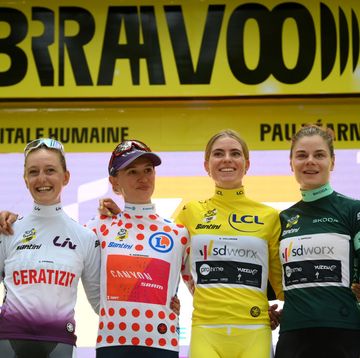
How Much Did Tour de France Femmes Riders Earn?
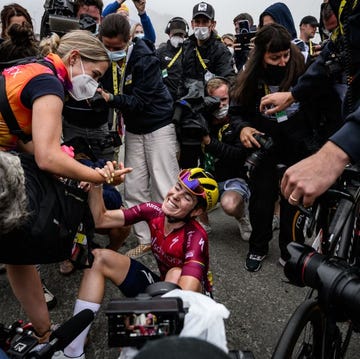
5 Takeaways from the Tour de France Femmes
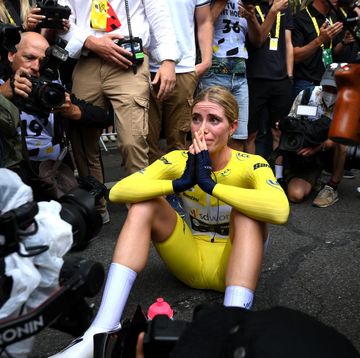
Who Won the 2023 Tour de France Femmes?
- MAGAZINE OFFERS
- BIKE INSURANCE
- Best Products
- Maintenance
- Accessories
- Long-Term Reviews
- BikeRadar Podcast
- First Look Friday
- Bike of the Week
- Tech Features
- Routes and Rides
- Bike Galleries
- BikeRadar Bargains
- Buyer's Guides
- Fitness & Training
- Sizing & Fit
- Mountain Biking UK
- Cycling Plus
What do the Tour de France leaders jerseys mean? Yellow, green, polka dot and white jerseys explained
How to win the Tour de France general, sprint, mountains and youth classifications
POOL LEQUIPPE/BELGA MAG/AFP via Getty Images
Colin Henrys
To a first-time viewer, the Tour de France can be a minefield. The winner is not simply decided by which rider crosses the finish line first in Paris.
How can a rider win multiple stages and not wear the yellow jersey? What is that polka dot jersey about? And what's with all the jargon they use?
Here’s our full guide to how the Tour de France is won: the classifications, the jerseys and the previous winners.
Tour de France classifications explained – what do the different jersey colours mean?

The Tour de France consists of four classifications that individual riders can win. The different classifications are signified by coloured cycling jerseys :
- The general classification (GC) – yellow jersey
- Mountains classification – polka dot jersey
- Points classification – green jersey
- Young rider classification – white jersey
The leader of each classification at the end of each stage wears the jersey on the following day.
If they continue to lead, they continue to wear the jersey until someone knocks them from the top of the classification. The leader of the classification at the end of the race is the overall winner of that particular classification.
There is also a team classification, but no coloured jersey is awarded for this.
What is the Tour de France general classification (GC)?

The general classification is the oldest and most coveted classification in the Tour de France, and is led by the rider with the shortest cumulative time.
Each rider’s time is recorded on every stage and the GC ranks the entire field. The leader of the general classification after the final stage in Paris is the overall winner of the Tour de France.
Tour de France yellow jersey explained
The GC comes with the coveted yellow jersey – or maillot jaune in French – which is worn by the leader of the classification until their overall cumulative time is bettered by another rider at the end of a stage.
The yellow jersey then passes on to the new leader of the GC, and so on.
Previous Tour de France winners
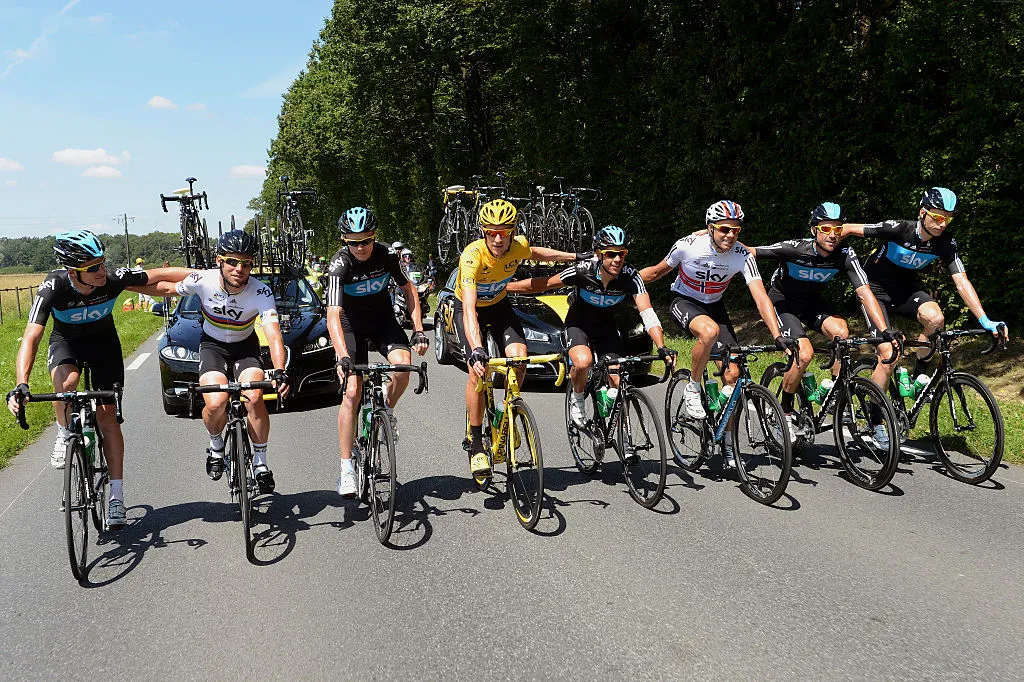
Jonas Vingegaard (Team Jumbo-Visma) won his first Tour de France in 2022, beating Tadej Pogačar (Team UAE Emirates), winner of the previous two editions of the Tour de France.
Egan Bernal's success in 2019 marked Team Ineos-Grenadiers' (formerly Team Sky) seventh Tour de France title in eight years.
Geraint Thomas won in 2018 and Chris Froome claimed four editions before that, after Bradley Wiggins had set the ball rolling in 2012.
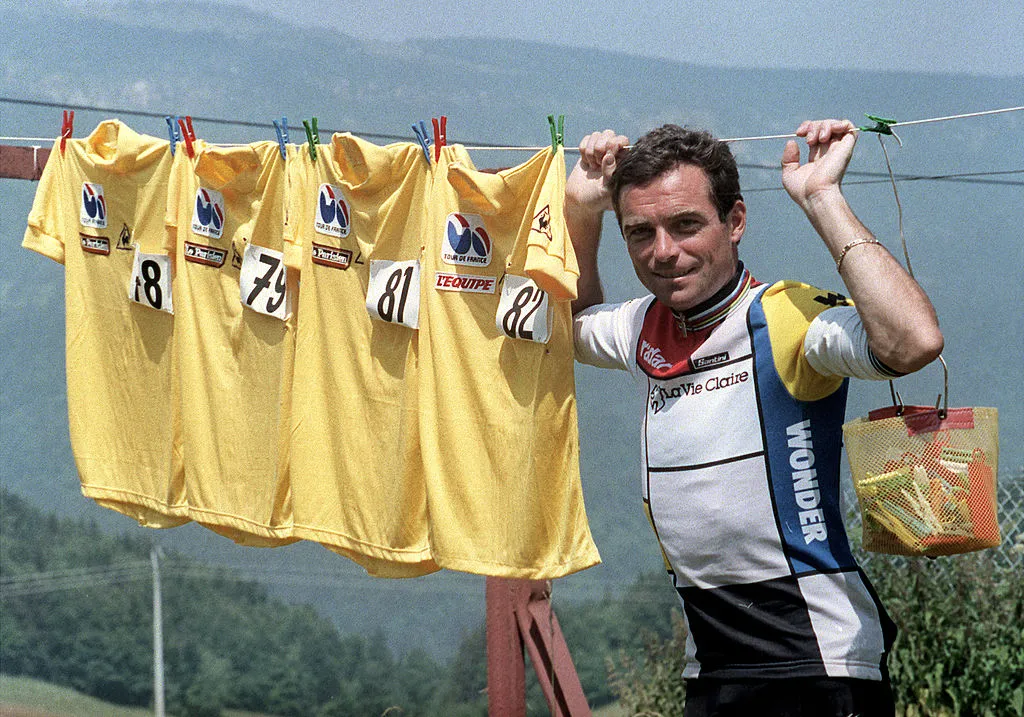
Since the beginning of the Tour, four riders have won the general classification five times: Jacques Anquetil, Eddy Merckx, Bernard Hinault and Miguel Indurain.
Meanwhile, Fabian Cancellara is the rider who has worn the yellow jersey for the most days without ever winning the Tour (29).
Julian Alaphilippe held the jersey for 14 days in 2019, but fell away in the general classification in the final few stages.
Tour de France mountains classification
What is the mountains classification.
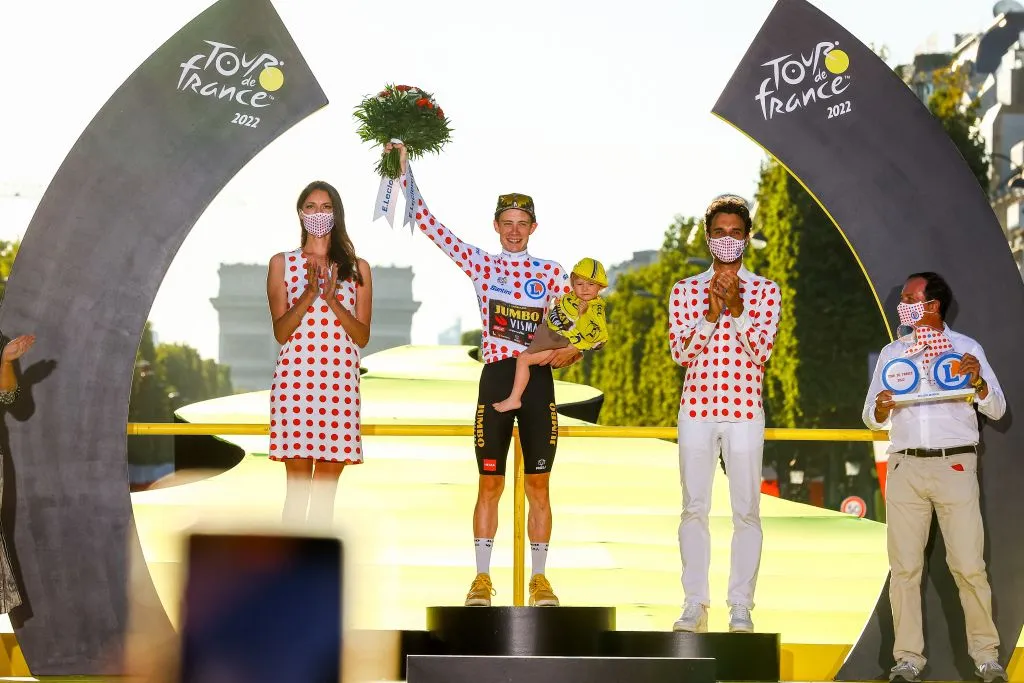
The mountains classification was introduced in 1933 as a secondary competition within the Tour de France.
The first riders to reach the top of categorised climbs in the Tour are awarded a certain number of points according to their position across the summit.
The climbs are categorised by a number, from 1 (difficult) to 4 (least difficult) based on factors such as the climb’s length and gradient.
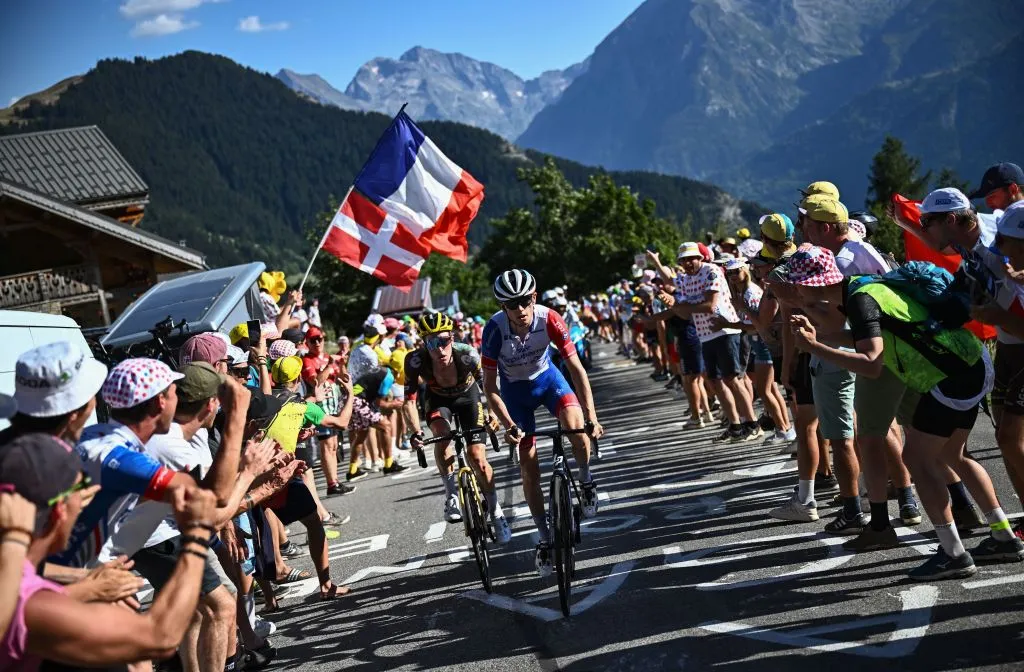
Climbs that are more difficult than category 1 are called h ors catégorie – "a class of their own" in French.
Hors catégorie climbs carry the most points. Summit finishes – stages that finish atop a climb – and category 1 climbs are the next most lucrative followed by category 2 and so on.
The first rider to reach the Col de la Loze, the highest peak of the 2023 Tour de France, on stage 17 will earn double points.
The rider with the highest cumulative points total leads the mountains classification and wears the polka dot jersey. The exception is if they are also leading another classification, such as the general. In that case, the second rider in the rankings wears the jersey.
At the end of the Tour, the overall winner of the classification is the King of the Mountains.
Tour de France polka dot jersey explained
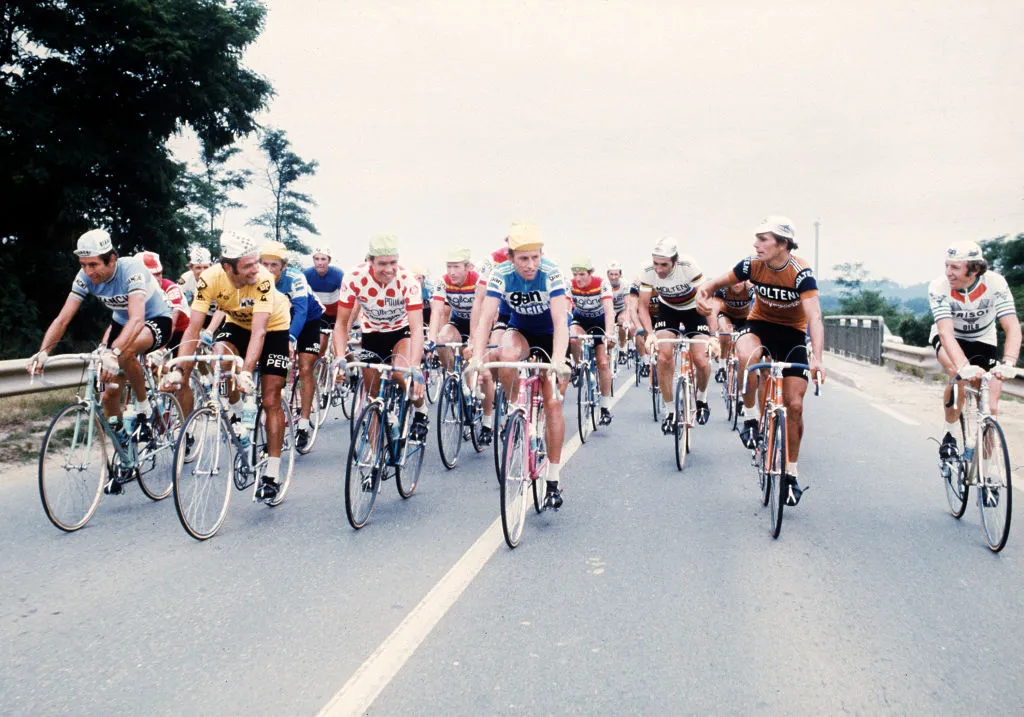
The mountains classification is signified by a white jersey with red polka dots (known as the polka dot jersey or maillot à pois ).
Vicente Trueba was the first winner of the King of the Mountains competition in 1933. The polka dot design wasn't introduced until 1975 when Bernard Thévenet won the classification.
Previous Tour de France mountains classification winners
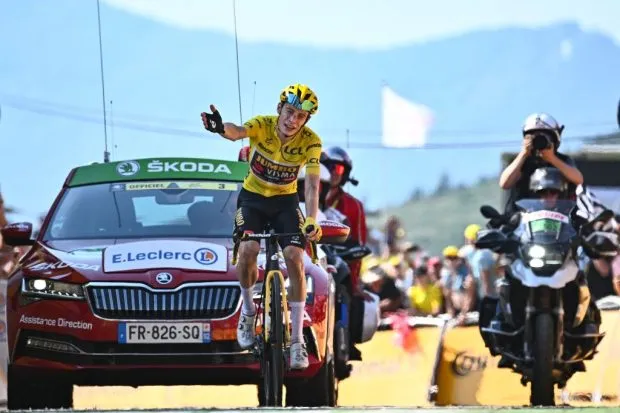
Jonas Vingegaard added the King of the Mountains jersey to his maillot jaune in 2022.
Tadej Pogačar took the mountains classification in 2021 and 2020, following Romain Bardet in 2019 and Julian Alaphilippe in 2018.
Another Frenchman, Richard Virenque, won the title seven times in his career between 1994 and 2004, while both Federico Bahamontes and Lucien Van Impe have won it six times, from 1954 to 1964 and 1971 to 1983 respectively.
Eight cyclists have now won the mountains classification and general classification in the same year:
- Gino Bartali
- Sylvère Maes
- Fausto Coppi
- Federico Bahamontes
- Eddy Merckx
- Carlos Sastre
- Chris Froome
Pogačar, Bartali, Coppi and Merckx have all done it twice.
Tour de France points classification
What is the points classification.
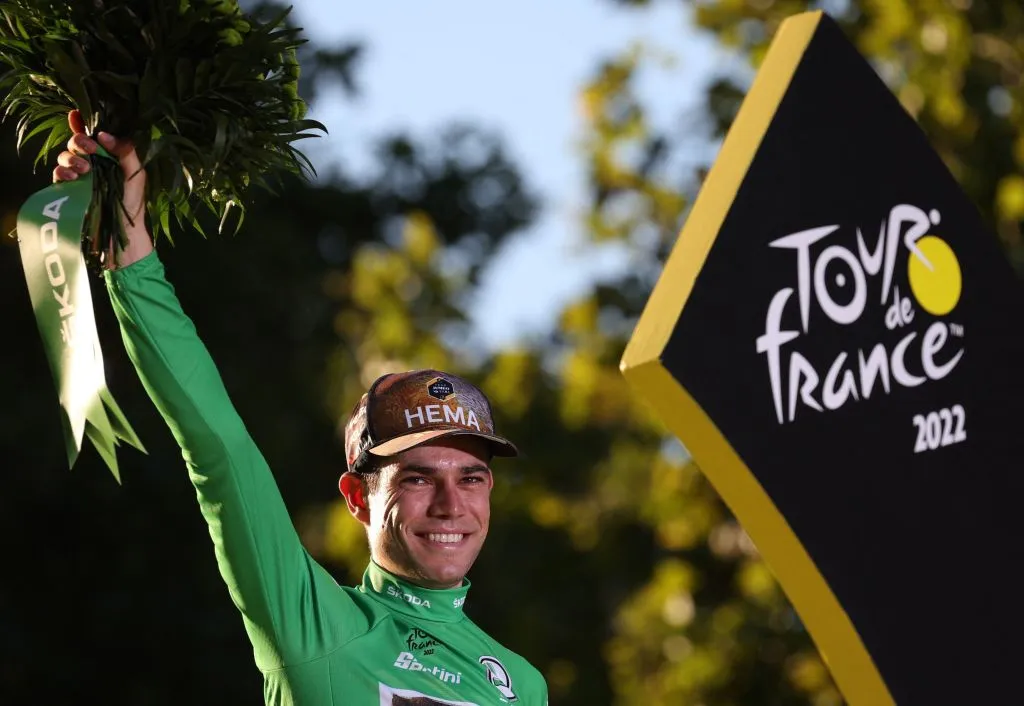
The points classification was introduced in 1953 as an incentive for sprinters, with Fritz Schär being the first rider to win it.
The first 15 riders to complete each stage are awarded points, with the most points going to the first rider and the following 14 receiving successively fewer points.
More points are on offer for flat stages, again as an incentive to the sprinters. Riders can also gain points by winning intermediate sprints (sprints that take place at designated points part-way through a stage).
Tour de France green jersey explained
The leader of the points classification is indicated by a green jersey ( maillot vert ). Green matched the logo of the first jersey sponsor, La Belle Jardinière clothing store.
The overall prize is awarded to the rider with the most points at the end of the Tour.
Previous Tour de France points classification winners
The green jersey went to Wout van Aert in 2022 and Mark Cavendish in 2021.
In previous years the award had become synonymous with one man: Slovakian superstar Peter Sagan. He claimed the prize for a record-breaking seventh time in 2019.
Tour de France young rider classification
What is the young rider classification.
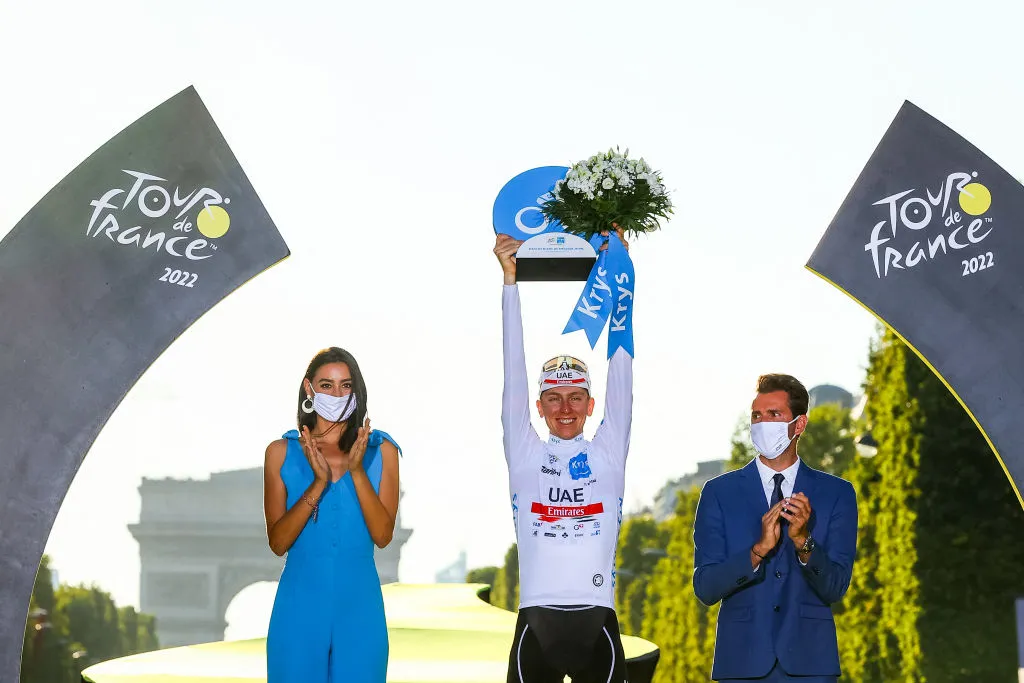
The young rider classification was introduced to the Tour in 1975. Classics great Francesco Moser was its first winner.
This year it applies only to cyclists born on or after January 1, 1998 (under the age of 26).
Just like the general classification, it’s calculated using each rider's cumulative overall time but is aimed at rewarding young riders in the early stages of their careers.
Tour de France white jersey explained
The youth classification is signified by a white jersey, and much in the same way as the other categories, the rider currently topping the classification wears it until someone else overtakes their lead.
Previous Tour de France young rider classification winners

Beaten into second in the GC, Tadej Pogačar was still the fastest young rider in 2022.
The Slovenian had become the sixth man to win both the white and yellow jersey in the same year when he rode to victory at the 2020 Tour de France, joining Egan Bernal (2019), Laurent Fignon (1983), Jan Ullrich (1997), Alberto Contador (2007) and Andy Schleck (2010). He then repeated the feat in 2021.
Pierre Latour won the young rider classification in 2018, while British twins Adam and Simon Yates were triumphant in the previous two years.
What is the Tour de France team classification?
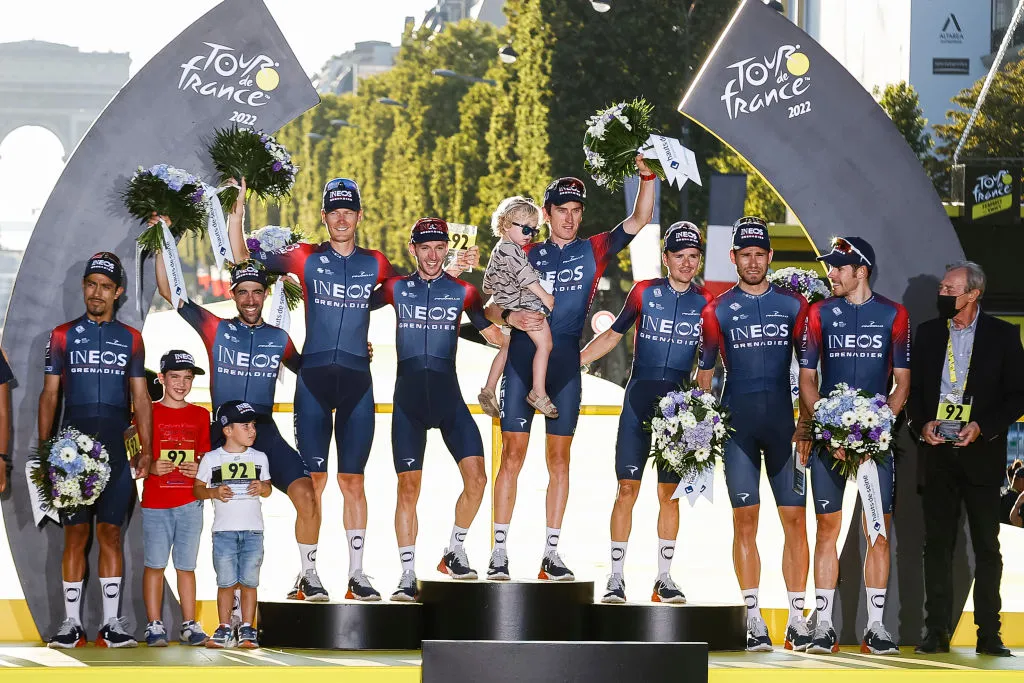
The team classification has been part of the Tour de France since 1930 but awards no coloured jersey. Instead, the team is given race numbers with a yellow background, rather than white.
It’s not considered to be as important as the individual classifications. Teams don’t normally set out with an ambition to win it. But they may change their tactics during the race if they are in a good position to do so.
The team classification takes the time of each squad's top three finishers on every stage. The team with the lowest cumulative time leads the classification.
Previous Tour de France team classification winners
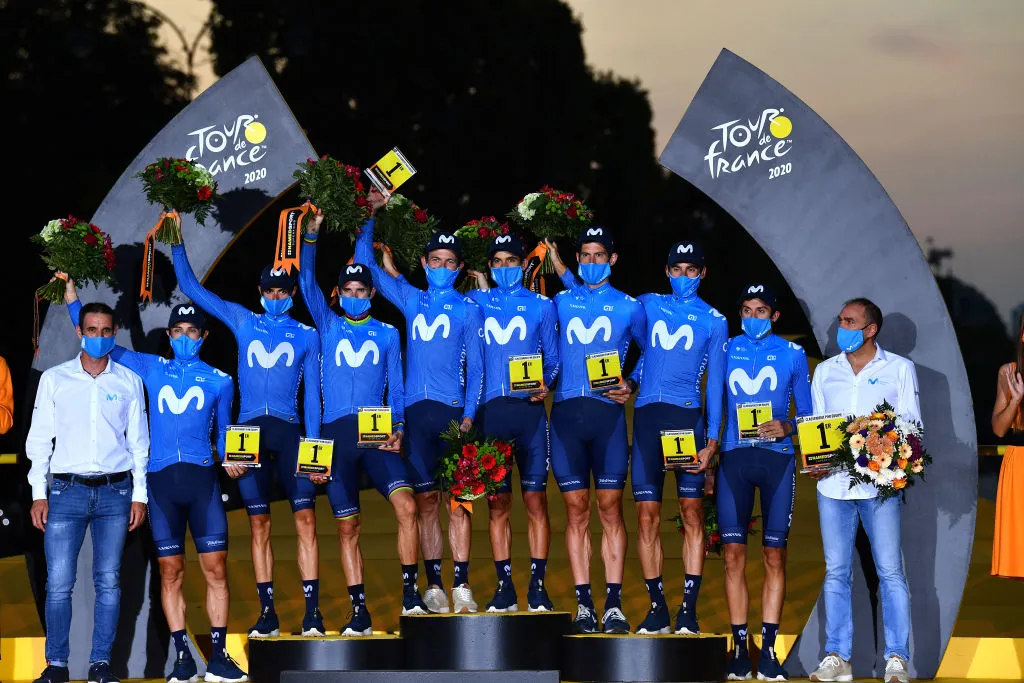
Movistar Team has dominated the classification in recent years, topping the team rankings in 2015, 2016, 2018, 2019 and 2020. This is despite none of its riders winning the Tour in those years.
Generally, the team with the rider leading the Tour will be more inclined to sacrifice teammates to protect the individual's lead, making winning both the individual and team classification – as Team Sky did in 2017 – a rare feat.
Share this article

- Terms & Conditions
- Subscribe to our magazines
- Manage preferences
- Race Previews
- Race Reports
- Race Photos
- Tips & Reviews
Riders to Look Out for at Dwars Door Vlaanderen Men in 2024
Lorena wiebes secures hard-fought victory at gent-wevelgem women’s race, mads pedersen edges out mathieu van der poel in epic gent-wevelgem duel, live: 2024 women’s gent wevelgem, women’s dwars door vlaanderen 2024 race preview.

Email: [email protected]
The Ultimate Guide to the Iconic Jerseys of Tour de France
Mathew Mitchell
- Published on June 29, 2023
- in Men's Cycling
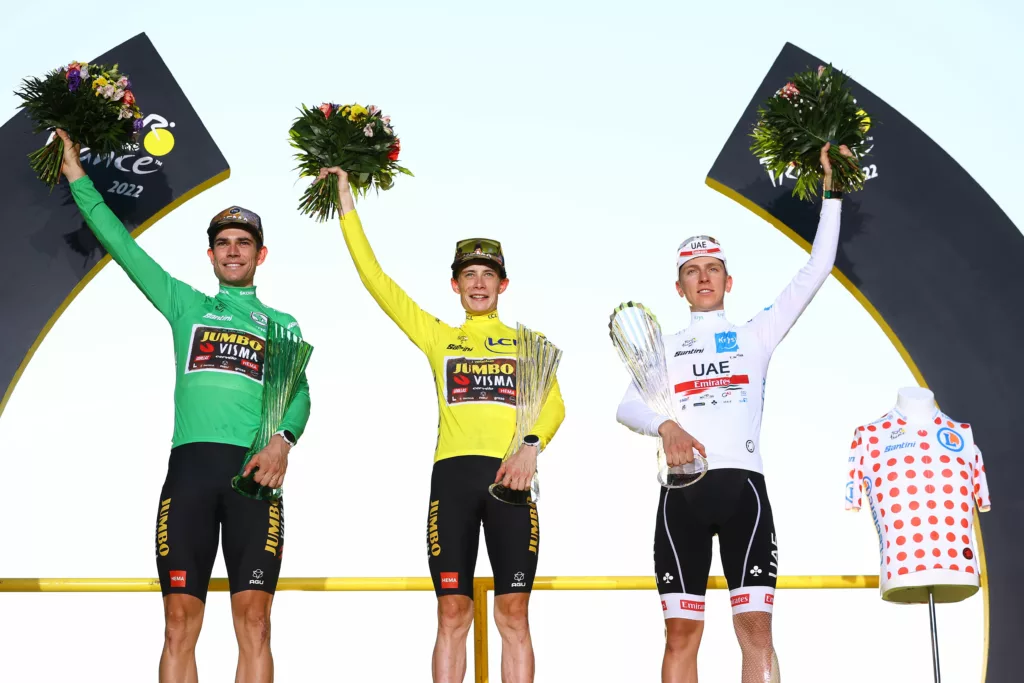
Step into the world of Tour de France and be mesmerised by the kaleidoscope of colours and symbolism that grace the iconic jerseys worn by the pro peloton. In this ultimate guide, we take you on a journey through the rich history and captivating stories behind these renowned garments. From the infamous yellow jersey that symbolises the leader of the race, to the polka dot jersey representing the best climber, each jersey carries its own unique narrative.
Table of Contents
Discover the secrets behind the green jersey, awarded to the best sprinter, and the white jersey, honouring the best young rider. Unveiling the intricate details and design choices, we delve into the significance of every stripe, dot, and patch. Whether you’re a fan of cycling or simply intrigued by the world of sports fashion, this guide will leave you with a newfound appreciation for the artistry and symbolism woven into the fabric of the Tour de France jerseys. So gear up and embark on this captivating journey through the vibrant world of cycling attire.
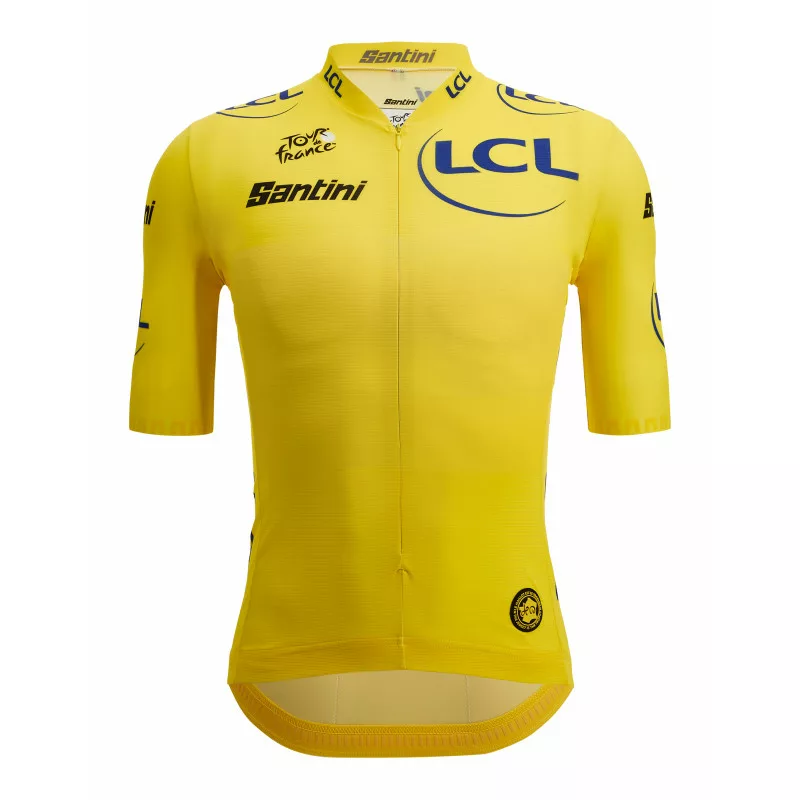

The yellow jersey: Maillot Jaune – The leader’s jersey
The yellow jersey , or Maillot Jaune, is undoubtedly the most iconic and coveted jersey in the Tour de France. Worn by the overall leader of the race, it signifies their dominance and command over the peloton. The history of the yellow jersey dates back to 1919 when it was introduced as a way to easily identify the race leader. The colour yellow was chosen due to its close association with the yellow paper used by the organising newspaper, L’Auto, which later on became L’Équipe.
The yellow jersey is not just a symbol of leadership; it also represents the determination, endurance, and sheer willpower required to succeed in the gruelling race. The jersey’s design has evolved over the years, but its distinctive yellow hue remains a constant. From the classic golden shade to the vibrant lemon yellow, each iteration of the jersey has left an indelible mark on the history of the Tour de France. Similar to the All Blacks in rugby, a simple jersey has come to represent something much bigger.
The yellow jersey is not only a badge of honour but also a target for other competitors. Riders will fight tooth and nail to seize the coveted jersey, resulting in intense battles throughout the race. It is this relentless pursuit of the yellow jersey that adds an extra layer of excitement to the Tour de France, making it one of the most anticipated and thrilling sporting events in the world.
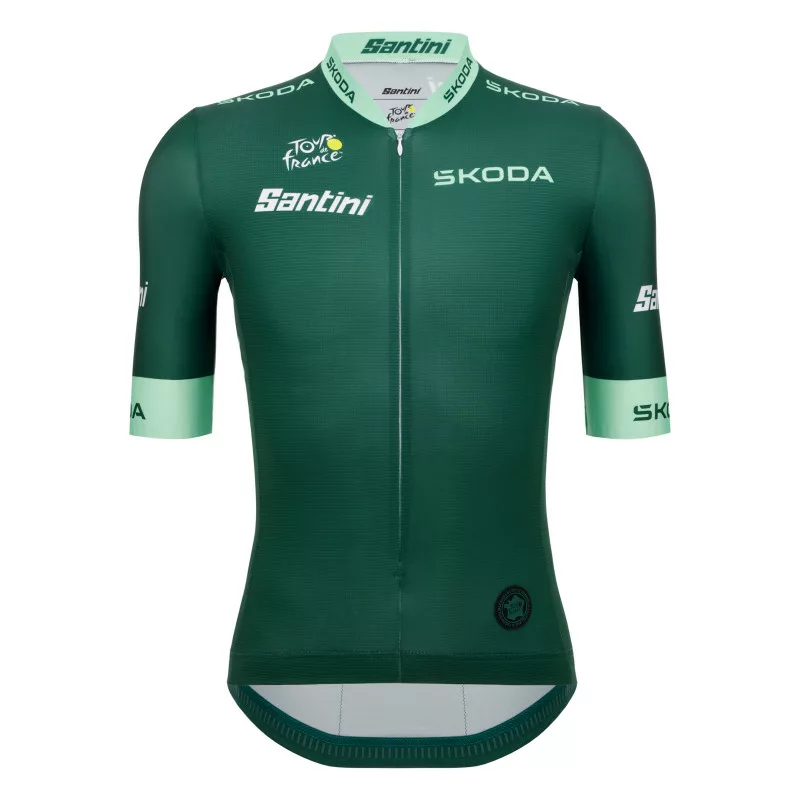
The green jersey: Maillot Vert – The sprinter’s jersey
While the yellow jersey represents the overall leader, the green jersey, or Maillot Vert, is awarded to the best sprinter in the Tour de France. This jersey recognises the riders who excel in the flat stages and possess exceptional speed and strength. It’s not just about flat stages though, increasingly the winner has had to do well on hills. The green jersey was first introduced in 1953 to add another dimension to the race and reward the sprinters for their unique skills.
The green jersey stands out from the crowd with its vibrant shade of green, often referred to as “sprinters’ green.” The colour was chosen to symbolise the lushness and energy associated with sprinting. The design of the jersey features various sponsors’ logos, contributing to its dynamic and eye-catching appearance. Fans of a certain age will remember PMU’s logos on it but for the 2023 Tour de France, Skoda will have their logo on the green jersey.
Winning the green jersey requires consistent performance across the flat stages, where the sprinters have the opportunity to showcase their explosive power. Points are awarded at intermediate sprints and the finish line, with the rider amassing the most points throughout the race being crowned the winner of the green jersey. The battle for the green jersey adds an extra layer of excitement to the Tour de France, as riders push themselves to the limit in thrilling sprint finishes.
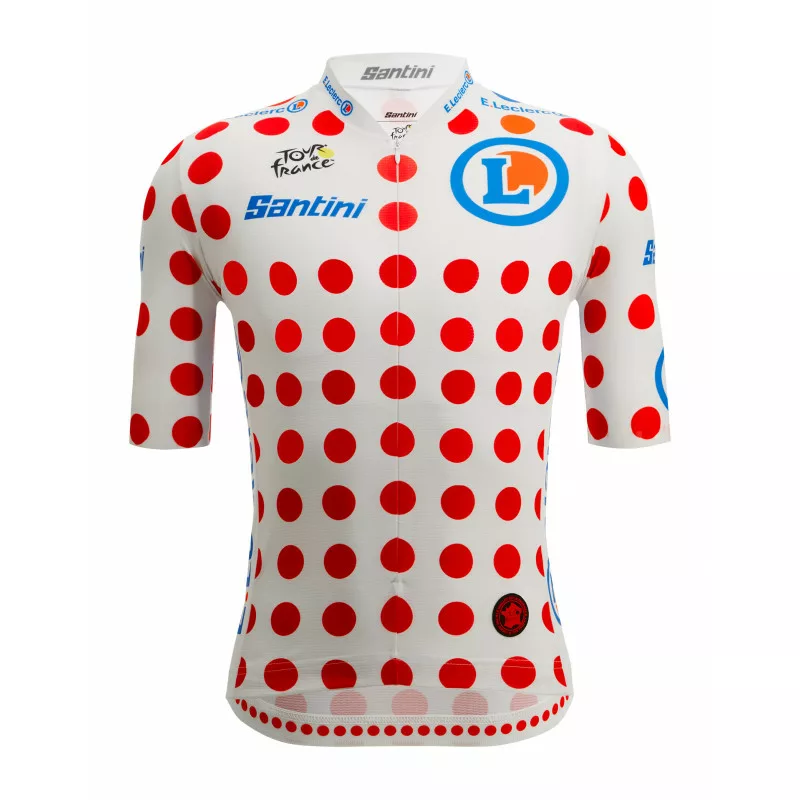
The polka dot jersey: Maillot à Pois – The King of the Mountains jersey
The polka dot jersey, or Maillot à Pois, is one of the most visually striking jerseys in the Tour de France. It is awarded to the rider who excels in the mountain stages, conquering the challenging ascents and demonstrating exceptional climbing abilities. Introduced in 1975, the polka dot jersey adds a touch of drama to the race, highlighting the fierce battles that take place in the mountains. Despite being a relatively recent addition as a jersey, there has been a form of a mountains classification since 1905.
The polka dot jersey gets its name from the distinctive polka dot pattern adorning the jersey. The design was inspired by the red and white polka dot jersey worn by the best climber in the 1969 Vuelta a España, which caught the attention of the Tour de France organisers. The dots represent the mountains and the relentless effort required to conquer them.
To win the polka dot jersey, riders must accumulate points by reaching the mountain summits first. The more challenging the climb, the more points are awarded. The King of the Mountains is determined by the rider with the highest number of points, showcasing their climbing prowess and tenacity. The polka dot jersey has become a symbol of endurance and determination, representing the gruelling battle between man and mountain in the Tour de France.
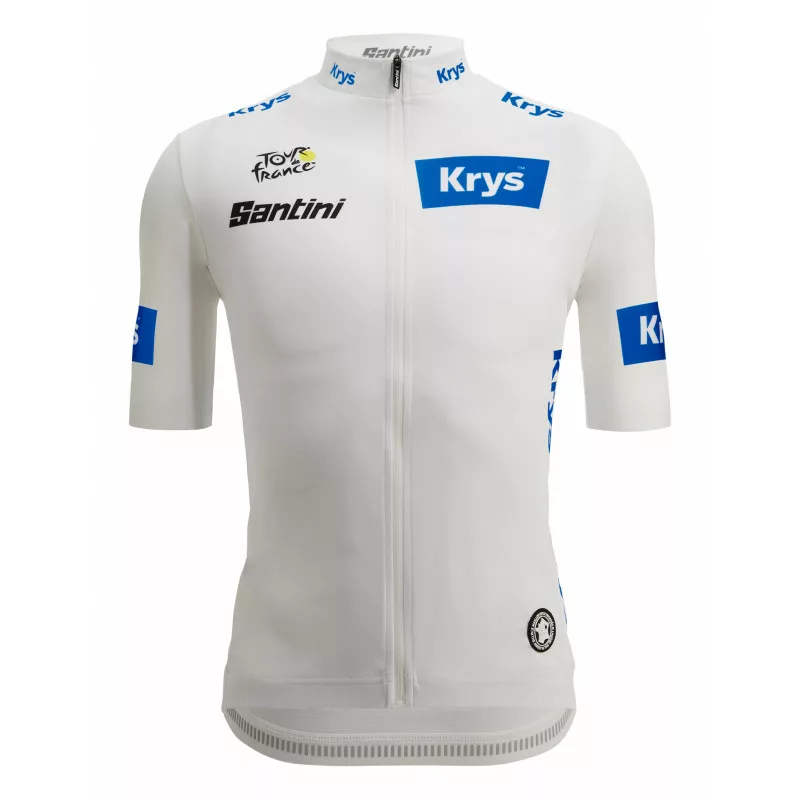
The white jersey: Maillot Blanc – The best young rider jersey
The white jersey, or Maillot Blanc, is a symbol of youthful talent and promise in the Tour de France. It is awarded to the best young rider under the age of 26, highlighting the emerging stars of the sport. The white jersey was also introduced in 1975 to recognise the impressive performances of young riders and provide them with a platform to shine.
The white jersey stands out with its clean and crisp design, representing the purity and potential of young riders. It serves as a reminder that the future of cycling lies in the hands of these talented individuals. The white jersey is often hotly contested, as young riders seize the opportunity to make their mark on the race and showcase their potential.
To win the white jersey, riders must demonstrate exceptional skill and consistency throughout the race. They compete not only against each other but also against more experienced riders, making their achievements even more impressive. The white jersey offers a glimpse into the future of the sport, celebrating the young riders who have the potential to become the next generation of cycling legends.
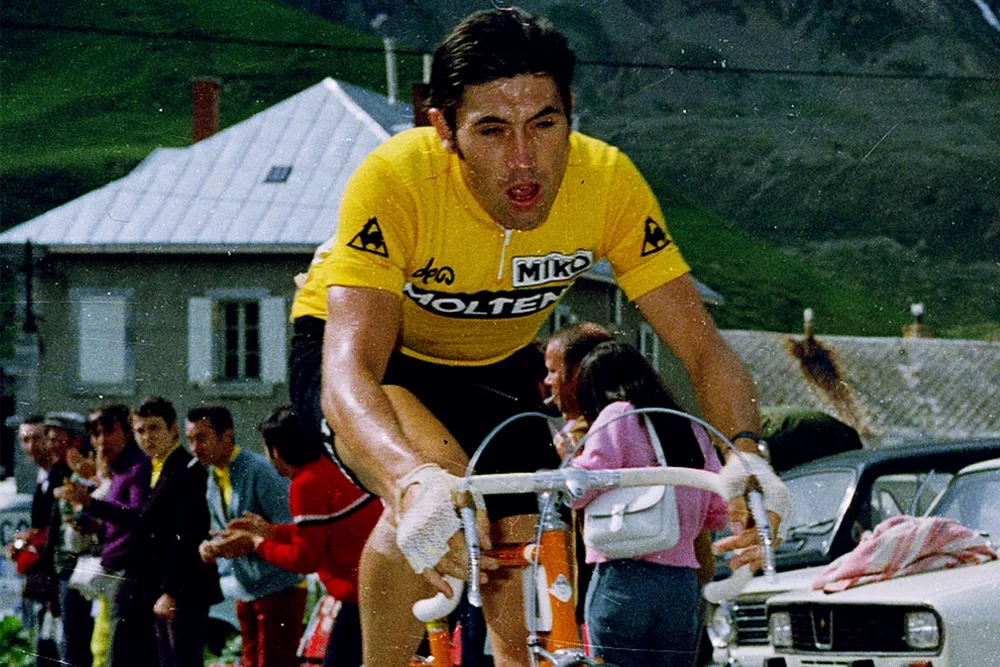
The history and significance of the jerseys
The jerseys of the Tour de France carry a rich history and deep significance that is intertwined with the race itself. Each jersey tells a story, representing different aspects of the sport and the extraordinary athletes who participate in it. From the inaugural yellow jersey that marked the birth of a tradition, to the green jersey that celebrates the explosive power of sprinters, these jerseys have become symbols of excellence and determination.
Over the years, the jerseys have evolved in design and style, reflecting the changing times and the advancements in sports fashion. What started as simple garments to distinguish the race leaders have transformed into works of art, with intricate patterns, bold colours, and sponsor logos adorning the fabric. The design choices are not arbitrary; they are carefully considered to capture the essence of each jersey and its respective category.
The jerseys have also witnessed the triumphs and tribulations of legendary riders who have left an indelible mark on the Tour de France. From Eddy Merckx ‘s dominance in the yellow jersey to Peter Sagan’s reign as the king of the green jersey, these riders have become synonymous with the jerseys they wore, etching their names into the annals of cycling history.
The significance of the jerseys extends beyond the race itself. They have become cultural icons, representing the spirit of competition, the pursuit of excellence, and the camaraderie among riders. Fans and collectors alike treasure these jerseys, displaying them as symbols of their love for the sport and the enduring legacy of the Tour de France.
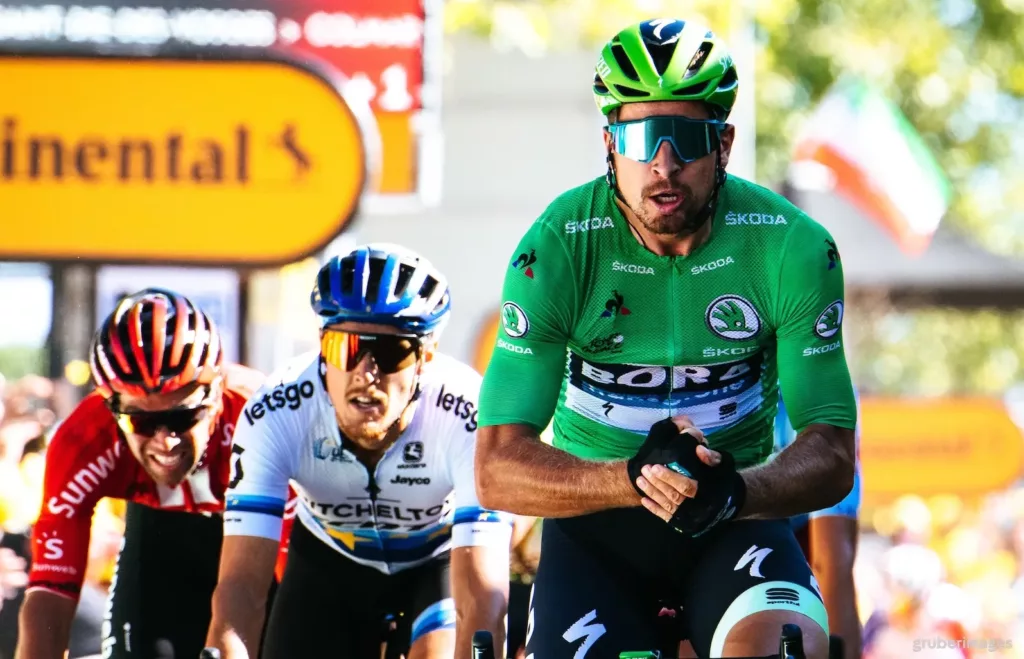
Famous riders who have dominated the jerseys
Throughout the history of the Tour de France, there have been riders who have dominated the different jerseys, leaving an indelible mark on the race. These riders have become legends in their own right, their achievements etched into the fabric of the jerseys they wore.
In the yellow jersey category, one cannot overlook the legendary Eddy Merckx. The Belgian cyclist won the yellow jersey a record-breaking five times and is considered one of the greatest riders in the history of the sport. Merckx’s dominance in the yellow jersey remains unparalleled, earning him the nickname “The Cannibal” for his insatiable hunger for victory.
In the green jersey category, Peter Sagan’s name shines bright. The Slovakian cyclist has won the green jersey a record-breaking seven times, showcasing his exceptional sprinting abilities and versatility as a rider. Sagan’s charismatic personality and thrilling performances have made him a fan favourite, and his reign as the king of the green jersey continues to captivate audiences around the world.
In the polka dot jersey category, Richard Virenque stands out as one of the most successful climbers in the history of the Tour de France. The French cyclist won the polka dot jersey a record-breaking seven times, showcasing his mastery of the mountains and his relentless pursuit of victory. Virenque’s tenacity and climbing prowess have made him a legend among fans of the race.
In the white jersey category, Jan Ullrich’s name holds a special place. The German cyclist won the white jersey three times and went on to become the overall winner of the Tour de France in 1997. Ullrich’s achievements at a young age marked him as a rising star in the sport, and his performances continue to inspire young riders to this day.
These riders, among many others, have left an indelible mark on the Tour de France jerseys, solidifying their status as legends of the race and inspiring future generations of cyclists.
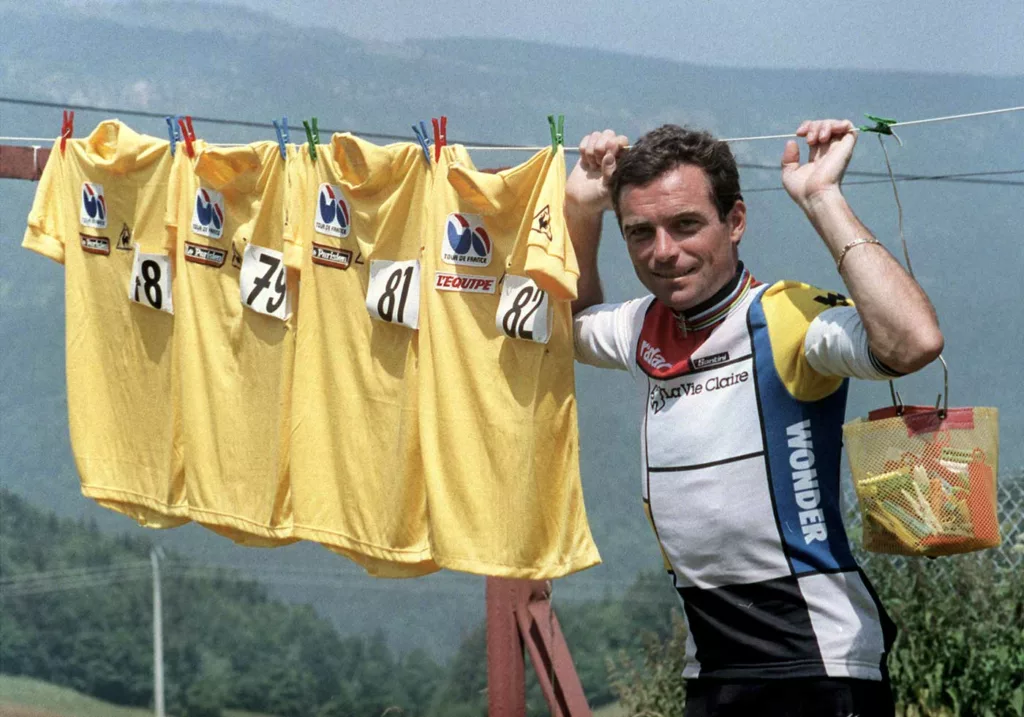
The evolution of the jerseys over the years
The jerseys of the Tour de France have undergone significant changes over the years, reflecting the evolution of both the sport and the fashion industry. What started as simple garments to distinguish the race leaders have transformed into highly sought-after fashion statements, capturing the attention of fans and designers alike.
In the early years of the Tour de France, the jerseys were basic and functional, with minimal design elements. The emphasis was on functionality rather than fashion, as the primary purpose of the jerseys was to identify the race leaders. The yellow jersey, for example, was a simple garment made of wool, featuring a collar, buttons, and short sleeves.
As the race gained popularity and sponsorship deals became more prominent, the jerseys started to incorporate sponsor logos and branding. This marked the beginning of the jerseys’ transformation into advertising billboards, with sponsors’ names and logos becoming prominent features of the design.
In recent years, advancements in fabric technology and printing techniques have allowed for more intricate and visually stunning designs. The jerseys now feature bold colours, intricate patterns, and eye-catching graphics, capturing the attention of fans and creating a sense of excitement around the race.
The evolution of the jerseys is not just limited to their design; the materials used have also undergone significant changes. Wool has been replaced by lightweight synthetic fabrics that offer enhanced breathability and moisture-wicking properties, ensuring that the riders stay cool and comfortable during the race.
The jerseys of the Tour de France are a testament to the ever-changing nature of fashion and the sport itself. They reflect the trends and innovations of their respective eras, serving as a visual timeline of the race’s history and the evolution of cycling attire.
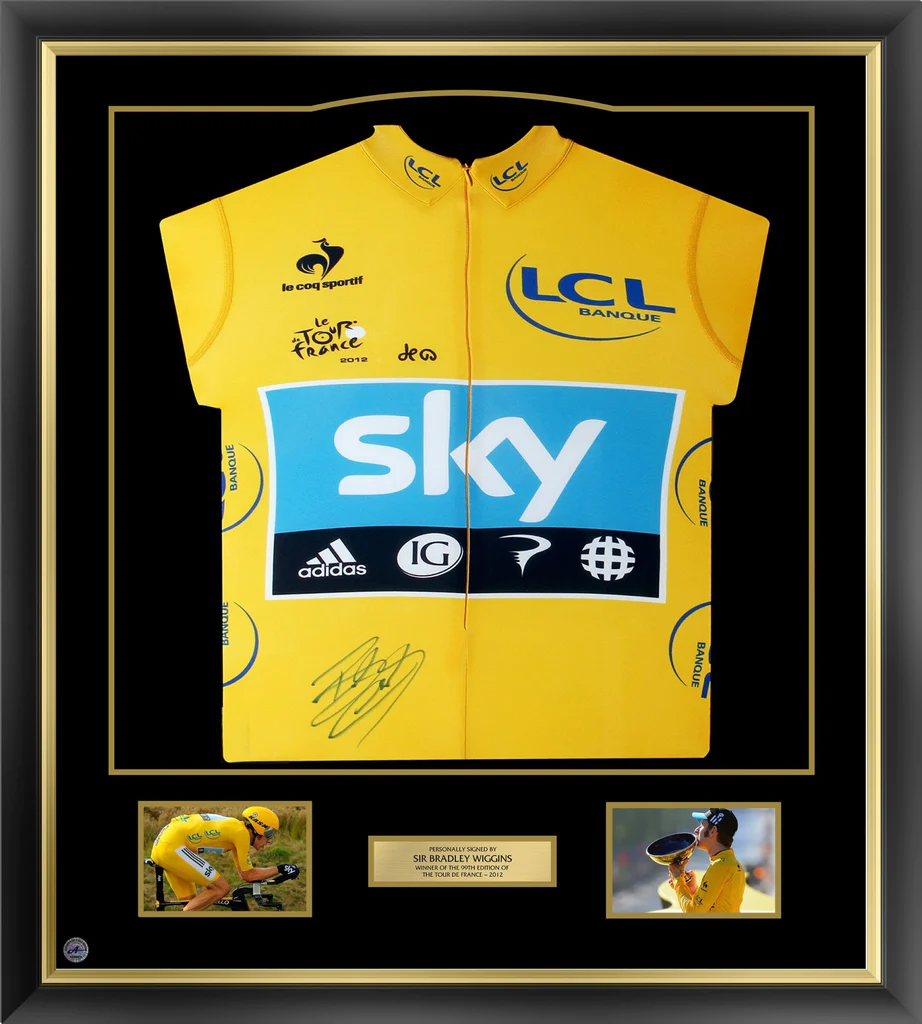
Collecting and displaying Tour de France jerseys
For fans of the Tour de France, collecting and displaying jerseys is a way to celebrate their love for the sport and the iconic race. Tour de France jerseys hold immense sentimental value, representing the history, achievements, and legends of the race. Here are a few tips for collecting and displaying these cherished garments.
Research and authenticity
When collecting Tour de France jerseys, it is important to research their authenticity. Look for official replicas or jerseys that have been verified by reputable sources. Be cautious of counterfeit jerseys that may be circulating in the market.
Focus on significance
Consider collecting jerseys that hold significance to you personally. Whether it’s the yellow jersey of your favourite rider or the polka dot jersey of a legendary climber, choose jerseys that resonate with you and tell a story.
Display with care
When displaying Tour de France jerseys, it is important to handle them with care. Use proper hangers or display cases to prevent creasing or damage to the fabric. Avoid exposing the jerseys to direct sunlight or excessive moisture, as this can cause fading or deterioration.
Tell the story
Accompany your displayed jerseys with information and stories about the riders or the race itself. This adds depth and context to the jerseys, allowing viewers to appreciate their significance and the history they represent.
Rotate your collection
If you have a substantial collection of Tour de France jerseys, consider rotating them periodically to keep the display fresh and interesting. This allows you to showcase different jerseys and riders while preserving the condition of each garment.
Collecting and displaying Tour de France jerseys is not just a hobby; it is a way to pay homage to the sport and the athletes who have made it legendary. It is a celebration of the rich history and captivating stories behind these iconic garments, allowing fans to immerse themselves in the vibrant world of cycling attire.
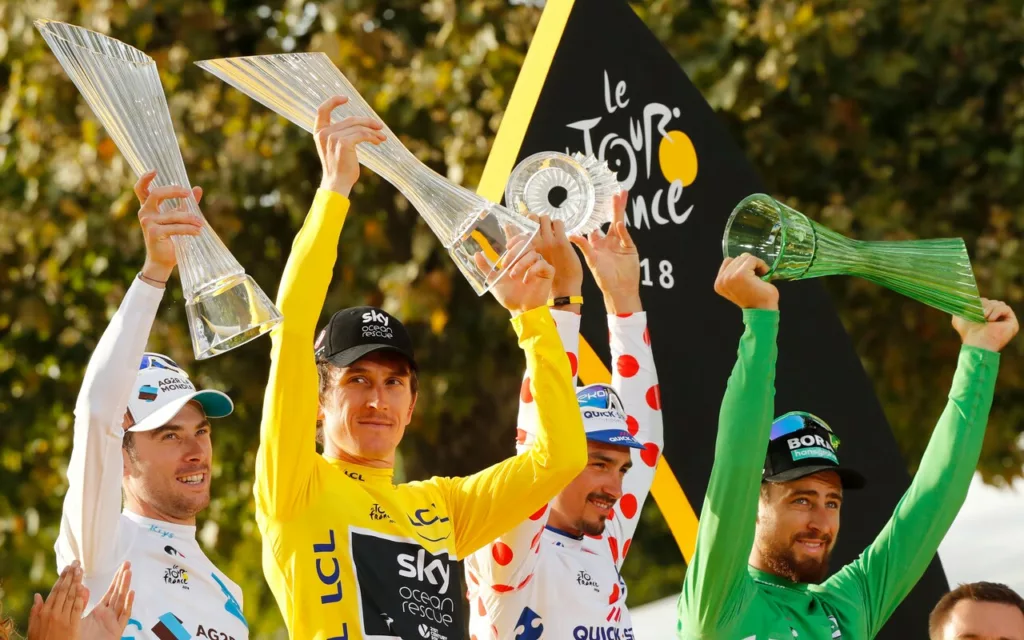
The Tour de France jerseys are more than just pieces of clothing; they are symbols of excellence, determination, and the indomitable spirit of the race. From the iconic yellow jersey that represents the leader to the polka dot jersey that honours the best climber, each jersey carries its own narrative and significance.
The jerseys of the Tour de France have evolved over the years, reflecting the changing times and the advancements in sports fashion. What started as simple garments to distinguish the race leaders have transformed into works of art, with intricate designs and bold colours capturing the attention of fans and designers alike.
Collecting and displaying Tour de France jerseys is a way to celebrate the sport and its legends. These jerseys hold immense sentimental value, representing the history, achievements, and legends of the race. They serve as a visual timeline of the Tour de France’s evolution and the enduring legacy of the athletes who have graced its stages.
So gear up and embark on this captivating journey through the vibrant world of cycling attire. Explore the secrets behind the yellow, green, polka dot, and white jerseys, and discover the stories that have shaped the Tour de France. Immerse yourself in the kaleidoscope of colours and symbolism that grace these iconic jerseys, and gain a newfound appreciation for the artistry woven into the fabric of the race. The Tour de France jerseys are not just garments; they are symbols of triumph, passion, and the enduring spirit of the race.
Related Posts
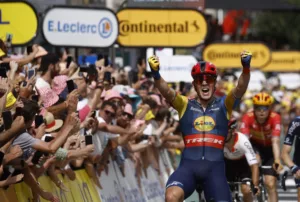
Tour de France primer: What is the polka-dot jersey?
Learn all about the Tour de France’s King of the Mountains competition
July 3, 2023
Neilson Powless is leading the Tour de France’s King of the Mountains classification.
That is why he is wearing the polka dot jersey.
How does the competition work?
Riders race for points at the tops of mountains on the course. Climbs in the Tour de France are ranked according to their difficulty, from fourth category through to first, with the hors catégorie —beyond category—designation reserved for the hardest, most prestigious ascents. King of the Mountains points are awarded in accordance with this classification. The harder the climb, the more points the first riders to cross its summit can earn.
During the race, the rider who has accumulated the most points so far in this contest wears the polka dot jersey. To win it by the end of the Tour in Paris, a rider needs to be more than just a great climber though. Competing for King of the Mountains points requires a great deal of calculation. Do they go in an early breakaway and try to earn points on the first climbs in a stage? Or do they wait till later, when the breakaway is likely to be caught, and go for the later ascents, where they may have to climb against the riders who are racing for the yellow jersey? Every day, contenders for the climbers’ competition have to study the race map and make such decisions, always keeping in mind that the Tour de France is a three-week event. Every point counts, but if they race up every hill, they might not have the strength they will need for the biggest alpine passes, where they could earn the most points. To be crowned King of the Mountains in Paris, a climber needs to race smart.
Neilson isn’t sure what the rest of the Tour holds for him, but he sure likes his King of the Mountains shirt.
“It’s very nice to be in the lead,” Neilson says. “I’m already in love with this polka-dot jersey. I fell immediately in love with it. Let’s see how long I can wear it. It’s still a narrow lead - if I miss one break in the mountains it will be gone, and we are still a long way from reaching Paris. ”
Share this story
Featured event, more from tour de france, neilson powless.
When Neilson Powless started racing X-Terra triathlons with his sister back home in Northern California, he just wanted to spend time outside and rip around the trails near his house. His first love was mountain-biking. It was his best discipline in those off-road triathlons, and when he got to high-school, there were all sorts of chances for him to compete in California’s mountain-bike league. Soon, he was travelling with the US national team, racing junior world cups and championships against the world’s most talented mountain-bikers. Race in and race out, Neilson proved he was one of them.
Then he decided he wanted to have a go on the road.
Neilson has progressed steadily since he turned pro in 2018, thanks to his hard-work and diligent approach to training. In 2020, Neilson Powless became the first tribally recognized Native North American to race the Tour de France. The next year, our rising American star won Spain’s greatest one-day race, the Clásica San Sebastián, and finished fifth at the world championships in Belgium. Neilson was stellar in 2022. After a strong campaign in the Ardennes, he finished fourth on GC at the Tour de Suisse and lit up the Tour de France. He finished the year off with a victory at the Japan Cup .
The 2023 season was his best yet. Neilson won his first race of the year: the Grand Prix Cycliste de Marseille. He then won the overall at Étoile de Bèsseges and stormed the Flemish classics, finishing third at Dwars door Vlaanderen and fifth at De Ronde in his debut campaign on the cobbles. At the Tour, he captured hearts with a stellar run in the King of the Mountains jersey.
Neilson lives in Nice, France with his wife and baby girl during the racing season. He enjoys exploring their new city and relaxing on the beach after hard rides through the Alps.
If he can find time in his schedule, Neilson would like to get back to his roots, and do some off-road alternative racing in 2024.

- Associated Press ,

- Noah Rubin ,

Trending Teams
2023 tour de france jerseys: what do the yellow, green, white and polka dot jerseys mean.
The world’s greatest cyclists have their sights set on the Tour de France 2023 — and with the infamous event less than one month away, not much time remains until we see the best riders compete to obtain the yellow, green, polka-dot and white jerseys. But what do these highly coveted jerseys mean to the cyclists fighting for them?
The famed Tour de France is making its way to NBC and Peacock in just a few weeks, taking place Saturday, July 1 through Sunday, July 23. See below to learn what the Tour de France jerseys mean and how a rider earns one.
RELATED: Tour de France 2023: How to watch, start time, route and more
What is the meaning of the yellow jersey?
Nearly every professional cyclist dreams of someday donning the Tour de France’s yellow jersey, also known as the maillot jaune .
This piece of clothing that stands above all else is awarded to the overall classification leader at the conclusion of each stage, with the fastest rider from the day before given the right to wear the jersey for the following day of racing. It’s important to remember, however, that the winner of this jersey is based on time rather than points, so the winner of the stage is not always the cyclist who gets to bear the yellow jersey.
When the race is completed, the overall champion of the Champs-Élysées receives the fabled yellow jersey. Last year’s winner of the maillot jaune was Team Jumbo-Visma’s Jonas Vingegaard , who remains a favorite for this year’s Tour.
RELATED: Relive Jonas Vingegaard’s 2022 Tour de France victory
What is the meaning of the green jersey?
The green jersey, also known as the maillot vert, is awarded to each day’s leader in points classification. These points are distributed among riders at stage finishes and intermediate sprints in line stages.
The number of points available for each stage varies depending on the stage’s profile. For example, a flat stage finish is typically worth more points than a hilly or mountainous stage finish. The jersey is typically dubbed “the sprinter’s jersey”, and is seen as a symbol of passion and explosivity from the riders who wear it.
Belgian star Wout van Aert earned the maillot vert in fiery fashion last year, picking up 480 points throughout the Tour de France. The closest any rider came to matching this number was Jasper Philipsen , who earned 286.
What is the meaning of the polka-dot jersey?
The Tour de France’s polka-dot covered jersey ( maillot à pois rouges) is awarded to the “King of the Mountains”, the rider who leads the pack in Mountains Classification.
Points are distributed to riders who reach the summit first in designated climbs of each stage. These, points, however, can vary depending on the difficulty of the climb. These climbs are ranked in categories 1 through 4, with 1 being the most difficult and 4 being the least. If a climb is ranked as “ hors catégorie”, it means that this is a climb “beyond category”, reserved for the most challenging endeavors. Points are then awarded based on the category of the climb.
A rider who earns the maillot à pois rouges symbolizes one who pushes beyond their limits with a great deal of courage. In addition to claiming the yellow jersey in 2022, Jonas Vingegaard also claimed last year’s polka-dot jersey, being crowned “King of the Mountains”.
RELATED: Click here for all NBC Sports cycling coverage
What is the meaning of the white jersey?
The white jersey ( maillot blanc) is one of promise and hope for the future. While the jersey first surfaced on the Tour in 1968 to reward the leader of combined classification, its meaning transformed in 1975 to a recognition of cycling’s young achievers.
Today, the white jersey remains as a symbol of youthful talent, being awarded to the best placed cyclist in overall standings under the age of 26. Slovenia’s Tadej Pogacar earned rights to the maillot blanc in last year’s Tour de France at 23 years old.
When is the 2023 Tour de France?
The 2023 Tour de France will take place from July 1-23. The riders will embark on the first stage in Bilbao on Saturday, July 1.
How can I watch the 2023 Tour de France?
Coverage will air on NBC Sports and Peacock from start to finish.
Be sure to follow OlympicTalk for the latest news, storylines, and updates on the 2023 Tour de France!
Stay up to date with notifications from The Independent
Notifications can be managed in browser preferences.
UK Edition Change
- UK Politics
- News Videos
- Paris 2024 Olympics
- Rugby Union
- Sport Videos
- John Rentoul
- Mary Dejevsky
- Andrew Grice
- Sean O’Grady
- Photography
- Theatre & Dance
- Culture Videos
- Food & Drink
- Health & Families
- Royal Family
- Electric Vehicles
- Lifestyle Videos
- UK Hotel Reviews
- News & Advice
- Simon Calder
- Australia & New Zealand
- South America
- C. America & Caribbean
- Middle East
- Politics Explained
- News Analysis
- Today’s Edition
- Home & Garden
- Fashion & Beauty
- Travel & Outdoors
- Sports & Fitness
- Sustainable Living
- Climate Videos
- Behind The Headlines
- On The Ground
- Decomplicated
- You Ask The Questions
- Binge Watch
- Travel Smart
- Watch on your TV
- Crosswords & Puzzles
- Most Commented
- Newsletters
- Ask Me Anything
- Virtual Events
- Betting Sites
- Online Casinos
- Wine Offers
Thank you for registering
Please refresh the page or navigate to another page on the site to be automatically logged in Please refresh your browser to be logged in
Tour de France 2023: Meaning behind yellow, green, polka dot and white jersey colours
The yellow jersey is the most famous and prestigious of them all, but there are three other colours to look out for in the peloton, article bookmarked.
Find your bookmarks in your Independent Premium section, under my profile
Wout van Aert, Magnus Cort Nielsen and Tadej Pogacar lead off stage 3

Sign up to our free sport newsletter for all the latest news on everything from cycling to boxing
Sign up to our free sport email for all the latest news, thanks for signing up to the sport email.
The 2023 Tour de France sees 180 riders compete for the famous yellow jersey or maillot jaune which rewards the overall winner of the race.
While the yellow jersey, won in 2020 and 2021 by Slovenian prodigy Tadej Pogacar and Denmark’s Jonas Vingegaard in 2023, is the most famous and prestigious of them all, there are three other colours to look out for in the peloton taking on this year's Tour de France route.
The green, polka dot, and white jerseys all have their own meanings, histories and significance for their respective holders.
While some riders (domestiques) work purely for the benefit of their team leader, others work to win individual stages, and others aim purely for one particular jersey.
It is not just the jerseys to watch out for – those riders wearing yellow helmets are the team leading overall when their times are added together, while the previous day’s combativity prize winner (the most aggressive racer) wears a red ‘bib’.
And anyone wearing a rainbow jersey is the reigning world champion, while national champions where the colours of their country during the Tour.
Here are the four Tour de France jerseys:
Yellow – overall winner
The biggest prize in cycling is the famous yellow jersey of the Tour de France . It is the awarded to the overall winner and worn by the current race leader at the start of each stage, and it is considered hugely prestigious to don the maillot jaune . It was initially introduced so fans could clearly spot the rider in charge, and took its colour from L’Auto (today L’Equipe), the newspaper owned by race founder Henri Desgrange.
Green– best sprinter
The green jersey is the prestigious prize given to the best sprinter in the Tour. The fastest in the pack compete for the biggest points at the end of flat stages and a smaller haul of points on offer during stages – called intermediate sprints. Peter Sagan won a record-equalling sixth green jersey last year, while Britain’s Mark Cavendish has won two and finished runner-up three times.
Polka dot – King of the Mountains
Perhaps almost as famous as the yellow jersey itself, the red polka dots on a white base are awarded to the rider who earns the most King of the Mountains points, which can be collected along the way by being the first to the top of categorised climbs – the more the severe the climb, the more points are on offer. Chris Froome won both the polka dot jersey and the yellow jersey in 2015, the first to do so since the great Eddy Merckx in 1970. In 2018 it was won by home favourite Julian Alaphilippe in some style.
White – best young rider
The white jersey is awarded to the highest placed rider who was 24 or younger on the first day of the year. The jersey was introduced in 1975, before a 10-year hiatus in the 90s, but returned in the 21st century and has been won by Alberto Contador, Nairo Quintana, and both the British Yates twins, Simon and Adam.
Join our commenting forum
Join thought-provoking conversations, follow other Independent readers and see their replies
Subscribe to Independent Premium to bookmark this article
Want to bookmark your favourite articles and stories to read or reference later? Start your Independent Premium subscription today.
New to The Independent?
Or if you would prefer:
Want an ad-free experience?
Hi {{indy.fullName}}
- My Independent Premium
- Account details
- Help centre
- Itzulia Basque Country stage 1: as it happened
The jerseys of the 2024 Tour de France
Details of the four iconic leader's jerseys and the minor prizes at the race
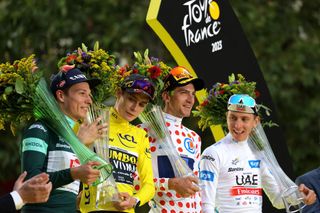
There are four Tour de France classification jerseys awarded after every stage of the three-week race, each recognising different successes and talents in the race.
The iconic yellow jersey is worn by the race leader based on time, the green jersey is awarded to the leader based on points awarded at intermediate sprints and the finishes, the red polka-dot king of the mountains jersey is based on points awarded on categorised climbs, while the white best young rider's jersey is another based on time, only reserved for riders born after January 1, 1998.
The team classification is also based on time, with the riders of the leading team racing with special yellow numbers (dossards). The most aggressive rider wears a special gold number during the following stage.
The most aggressive rider (super-combatif) of the whole race is selected by members of the jury at the end of the Tour de France and is awarded a trophy on the final podium in Paris just like the other competition winners.
Santini is the official jersey maker for the Tour de France, and will put the finishing touches - adding all necessary logos - to the winners' jerseys on-site at the Tour de France. That also means fans can buy their own replica jerseys and other Tour de France merchandising.
The yellow jersey – the maillot jaune

The yellow jersey is worn by the leader of the general classification, the rider with the lowest net time in the race after every stage. The rider who takes it to Paris is crowned the Tour de France winner, the most prestigious success of the men’s cycling season.
Jonas Vingegaard (Jumbo-Visma) won the 2022 and 2023 Tour de France.
Get The Leadout Newsletter
The latest race content, interviews, features, reviews and expert buying guides, direct to your inbox!
The jersey is yellow because the newspaper that first organised the race, L'Auto , was printed on yellow paper.
The classification is based on the time taken for each rider to cover the 21 stages, taking into account time penalties and time bonuses.
In the event of a tie in the general classification, the hundredths of a second recorded by the timekeepers during the individual time trial stages will be included in the total times in order to decide the overall winner.
In the absence of a time trial or if the riders remain tied, then the positions in which they finished each stage will be added up and, as a last resort, their finishing position on the final stage will be taken into account.
Bonus seconds are offered to encourage attacking racing and these are deducted from the time taken to cover the stage. Bonuses of 10, 6, and 4 seconds are awarded on the finish line to the leading three riders on each stage, excluding time trials. There are also certain climbs with bonuses of 8, 5, and 2 seconds at the top such as the Jaizkibel on stage 2 which should encourage aggressive riding from the favourites.
All riders must finish within the time limit – a certain percentage (ranging from 104% to 120% depending on the stage and average speed) of the stage winner's time each day in order to continue in the race. This is often a problem for sprinters, domestiques and injured riders when it comes to the high mountains.
The green jersey – the maillot vert
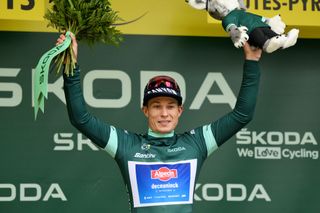
The green jersey is worn by the leader of the points classification. Points are awarded at stage finishes and intermediate sprints.
While the sprinters are the main candidates for the green jersey, it's the more versatile among them who have the best chance of overall success in Paris.
Peter Sagan is one such rider and has won green in seven of the past nine Tours, while Wout Van Aert dominated the points classification in 2022 to take his first green jersey. Jasper Philipsen won four sprint stages to anchor his green jersey in 2023.
Points are awarded to the first 15 riders at stage finishes or intermediate sprints, with different allocations depending on the nature of the stage. More points are awarded on flat stages than on mountain stages or time trials. The winner of a flat stage scores 50 points, a mountain stage winner just 20.
Only riders who complete the entire Tour de France are included in the points classification.
In the event where a rider or riders finish outside the time limit but are reinstated by the president of the commissaires’ jury, they will lose all points awarded to them in the points classification.
For 2023 the green jersey was a much darker shade of green than fans are used to as per a request made by the sponsor of the jersey, Skoda but the colour was not popular with fans.
The polka-dot jersey – the maillot blanc à pois rouges
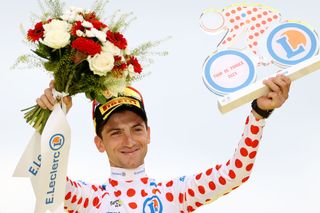
The polka-dot jersey is worn by the leader of the mountains classification, who is known as the 'king of the mountains.’ For the three recent editions of the Tour, the overall winner has also won the polka-dot jersey but Italy's Giulio Ciccone of Lidl-Trek won the competition in 2023.
Mountain points are on offer at the top of every classified climb, ranging from the hardest – 'hors catégorie' – to the easiest – category 4.
Hors catégorie: 20-15-12-10-8-6-4-2
Category 1: 10-8-6-4-2-1
Category 2: 5-3-2-1
Category 3: 2-1
Category 4: 1
In the event of two riders being equal on points, the rider with the most first places at the summit of super-category passes or climbs or summit finishes will be declared the winner.
Only riders who complete the entire Tour de France will be included in the best climber classification. In the event of a rider or riders finishing outside the time limit but being reinstated by the president of the commissaires’ jury, they will lose all points awarded to them in the best climber classification.
The white jersey – the maillot blanc

The white jersey is worn by the leader of the youth classification.
A 'young rider' is anyone who was born after January 1, 1998, so anyone under 25. The jersey goes to the best placed on general classification, based on time.
Tadej Pogačar has won the white jersey at the last four editions of the Tour, two of which he also won the yellow jersey.
The white jersey often used to be an indication of future Tour de France contenders, but since Pogačar has risen to greatness at such a young age, it's been difficult to see the future contenders as obviously. He is now too old for competition, with the white jersey up for grabs in 2024.
The gold dossard
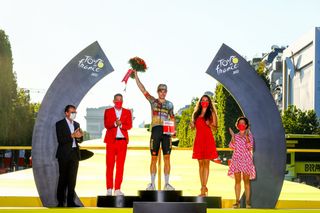
The special gold number dossard is awarded to the rider deemed, subjectively, the ‘most combative’ the previous day. It is usually the rider most active in the breakaway or someone who shows panache and aggression or even qualities of sportsmanship. It used to be a red number, but has changed this year as Century 21 now sponsor the classification and the new colour runs in line with their branding.
The prize, which is awarded on every road stage except the final one, is decided by a jury presided over by the race director and a new vote made by members of the Tour de France Club. Each stage’s most aggressive rider wears a gold race dossard during the following stage.
The race’s most aggressive rider (super-combatif) is selected by members of the jury at the end of the Tour de France and was won by Wout Van Aert in 2022. This year Victor Campenaerts (Lotto Dstny) won the super-combatif award after a number of aggressive attacks on stages.
Yellow dossard

The yellow race number dossard is worn by members of the team leading the teams classification. It is calculated by adding together the times of each team's three best riders on every stage.
Any team reduced to fewer than three riders will be eliminated from the team classification.
Wearing a leader’s jersey is mandatory from the signing-in protocol before the stage start until the post-stage press conference.
Skinsuits are provided to the leaders of the various rankings for time trial stages, with special fitting sessions arranged the day before the time trials.
Riders can lead multiple jersey classifications but only wear one jersey in the race. There is an established order of priority for the different leader’s jerseys: the yellow jersey, followed by the green jersey, then the red polka-dot jersey and finally the white jersey.
When a rider is leading several classifications, they wear the one designated by the order of priority. The other jerseys are then worn by the riders lying second, third or fourth in the corresponding classification.

Stephen is the most experienced member of the Cyclingnews team, having reported on professional cycling since 1994. He has been Head of News at Cyclingnews since 2022, before which he held the position of European editor since 2012 and previously worked for Reuters , Shift Active Media , and CyclingWeekly , among other publications.
Itzulia Basque Country 2024 start list
Can Marianne Vos deny Lotte Kopecky a historic Tour of Flanders hat-trick?
Itzulia Basque Country stage 1: Primoz Roglic takes stage win despite late detour
Most Popular
By Barry Ryan March 26, 2024
By Kirsten Frattini March 25, 2024
By Fabian Cancellara March 25, 2024
By Barry Ryan March 23, 2024
By Fabian Cancellara March 23, 2024
By Kirsten Frattini March 23, 2024
By Alasdair Fotheringham March 23, 2024
By Paul Norman March 22, 2024
By Josh Ross March 21, 2024
By Barry Ryan, Alasdair Fotheringham March 20, 2024
By Barry Ryan March 19, 2024

COMMENTS
Points. Polka dots. Mountains. White. Best young rider. The Tour de France sees the very best cyclists in the world battle it out for the yellow, green, white and polka dot jerseys, based on the ...
The jersey was given its polka dot design in 1975, inspired by track-racing specialist Henri Lemoine, who raced between the 1930s and 1950s. Jumbo-Visma's Vingegaard was also crowned King of the ...
POLKA DOT JERSEY. Symbol of the mountains, of a rider pushing beyond their limits and of courage, the red polka dot jersey, which is sponsored by E.Leclerc, is awarded to the Tour de France’s leader of the best climber classification. Although this classification was introduced in 1933, its symbol, the polka dot jersey, appeared in 1975 ...
Here’s everything to know about the Tour de France jersey colors and how riders win that yellow, green, polka dot, and white shirt.
What do the yellow, green, polka dot and white jerseys mean at the Tour de France? And who are the previous winners?
The polka dot jersey: Maillot à Pois – The King of the Mountains jersey. The polka dot jersey, or Maillot à Pois, is one of the most visually striking jerseys in the Tour de France. It is awarded to the rider who excels in the mountain stages, conquering the challenging ascents and demonstrating exceptional climbing abilities.
That is why he is wearing the polka dot jersey. How does the competition work? Riders race for points at the tops of mountains on the course. Climbs in the Tour de France are ranked according to their difficulty, from fourth category through to first, with the hors catégorie—beyond category—designation reserved for the hardest, most prestigious ascents.
The Tour de France’s polka-dot covered jersey (maillot à pois rouges) is awarded to the “King of the Mountains”, the rider who leads the pack in Mountains Classification. Points are distributed to riders who reach the summit first in designated climbs of each stage.
Tour de France 2023: Meaning behind yellow, green, polka dot and white jersey colours. The yellow jersey is the most famous and prestigious of them all, but there are three other colours to look ...
The iconic yellow jersey is worn by the race leader based on time, the green jersey is awarded to the leader based on points awarded at intermediate sprints and the finishes, the red polka-dot ...